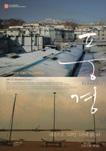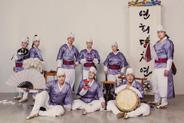



We're ready to serve your best interests in legal disputes. We provide a ordable consultation & representation.


October 2023, Issue 260
Published: October 1, 2023





We're ready to serve your best interests in legal disputes. We provide a ordable consultation & representation.


October 2023, Issue 260
Published: October 1, 2023
Thisis a splendid time of the year! We have passed through the rainy season of JuneJuly, the heat of August, and the typhoon season of September to arrive at the cool, calm, and comforting weather of October. It is this clement mid-autumn weather that makes this time of year so chock-full of events in Gwangju.
Publisher Dr. Shin Gyonggu
Editor-in-Chief Dr. David E. Shaffer
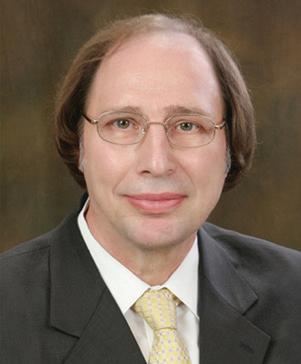
Managing Editor William Urbanski
Chief Copy Editor Isaiah Winters
Layout Editors Kim Sukang
Photographer Kim Hillel Yunkyoung
Online Editor Kim Sukang
The Gwangju News is the first English monthly magazine for the general public in Korea, first published in 2001. Each monthly issue covers local and regional issues, with a focus on the roles and activities of the international residents and local English-speaking communities.
Copyright ©2023 by the Gwangju International Center. All rights reserved. No part of this publication covered by this copyright may be reproduced in any form or by any means – graphic, electronic, mechanical, photocopying, recording, or otherwise – without the written consent of the publisher.

The Gwangju News is published by the Gwangju International Center: Jungang-ro 196-beon-gil 5 (Geumnam-ro 3-ga), Dong-gu, Gwangju 61475, South Korea Tel: (+82)-62-226-2733 Fax: (+82)-62-226-2731

Website: www.gwangjunewsgic.com
Email: gwangjunews@gic.or.kr
gwangjunews gwangju_news
Registration No. 광주광역시 라. 00145 (ISSN 2093-5315)
Registration Date: February 22, 2010
Printed by Jieum 지음 (+82)-62-672-2566
For volunteering and article submission inquiries, please contact the editor at gwangjunews@gic.or.kr
We are now in the middle of the Gwangju Design Biennale (September 7 – November 11), which the Gwangju News brought to you in our last issue. Starting off early in the month on a melodious note is the Second Gwangju Busking World Cup semifinal and final competitions (October 3–9), covered in our July issue.
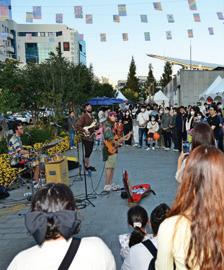
While the buskers are making music, the curtain opens on the World Human Rights Cities Forum (October 4–7), perennially hosted by Gwangju. This year’s theme is “Human Rights Cities Responding to Poverty and Inequalities.” For information on who is speaking and on what, with commentary, see our article (page 22).
Starting a day after the WHRCF begins is the annual Chungjang World Festival of Recollection (October 5–9) taking place in downtown Gwangju to take you back to “the good old days” when life was different than it is today. In the midst of those nostalgic remembrances, the three-day Gwangju International Community Week (October 6–8) is conveniently situated. It will be jam-packed with music, lectures, foods, and cinema. For the lowdown, see our feature (page 8). I don’t know if you noticed it yet, but on the first weekend of October, five – yes, five – major events will simultaneously be taking place in our fair city!
Carving out their own weekend later in the month is the 2023 Gwangju Fringe Festival (October 20–22) on the streets of downtown Gwangju. It will be bursting with performance arts, including thoughtprovoking plays and breath-taking acrobatics. For a rundown on this annual Gwangju event, turn to our main feature on page 6.
On the days that you are not attending one of the above events, pick up your October Gwangju News to read how Kwangju Christian Hospital and the Chonnam University Hospital are forging ahead in the field of medicine (page 10 and page 24), see what there is in Wando aside from that famous beach (page 13), and learn how to make your own dried persimmons (page 20).
So, enjoy the season, enjoy the festivities, and enjoy this issue of the Gwangju News!
Special thanks to Gwangju City and all of our sponsors.
David E. Shaffer Editor-in-Chief Gwangju NewsA picture-perfect end to the day. A pleasing sunset with a colorful sky proves that endings can often be beautiful.
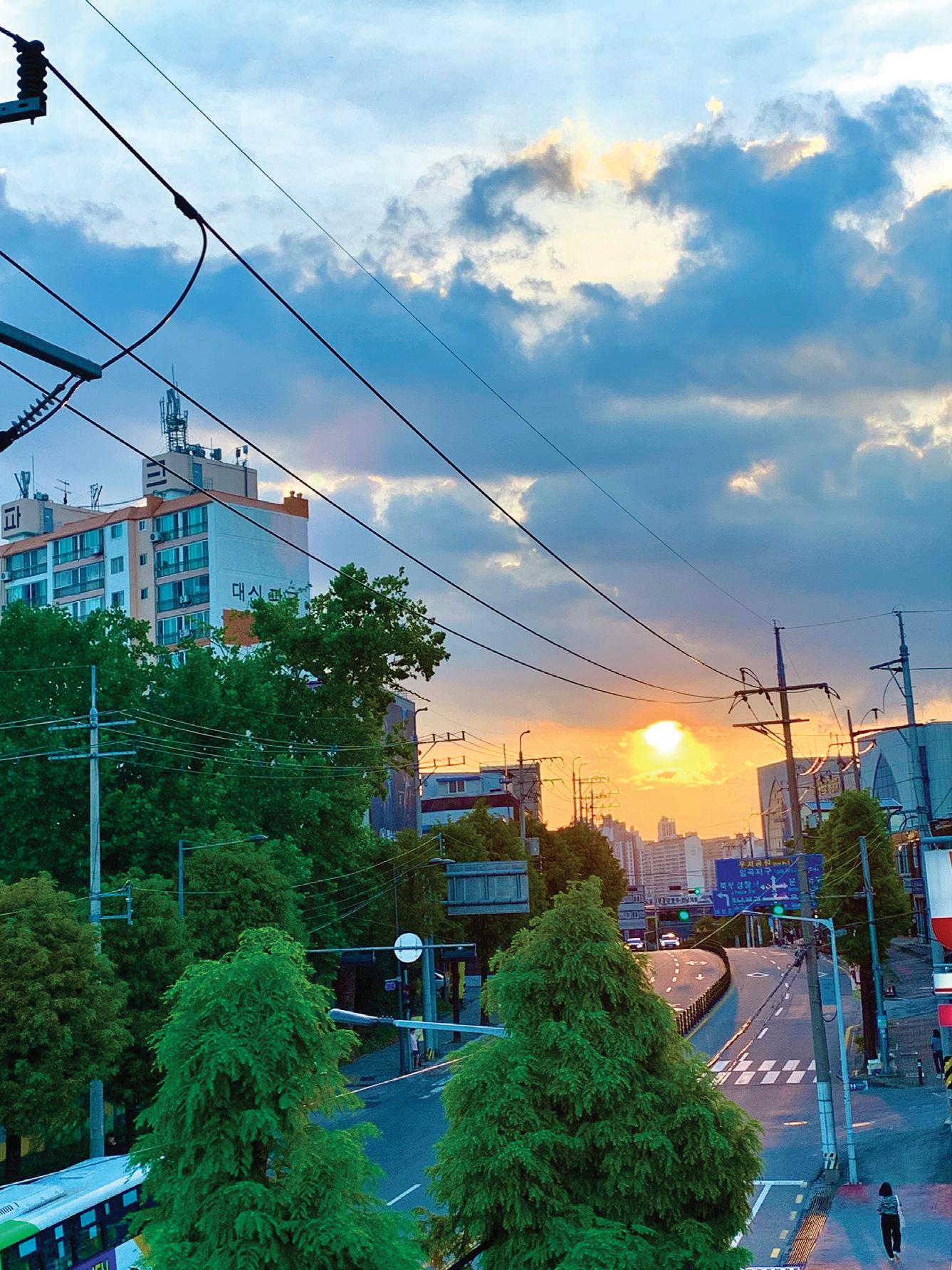

The living wage of Gwangju for next year is set at 12,760 won per hour, up 6.95 percent from this year. The living wage is set above the minimum wage to ensure substantial quality in workers’ lives. The 2024 living wage of 12,760 won is an increase of 6.95 percent (830 won) from this year’s 11,930 won. In monthly terms, it is 2,666,840 won, up 173,470 won from this year. The 2024 living wage will be applied to workers directly employed by Gwangju City, corporations, and industrial complexes from January of next year.
Source
Lee, Y. (2023, September 11). 광주시, 2024년 생활임금
시급 1만2760원 [The hourly living wage in Gwangju City for 2024 is 12,760 won]. Newsmaker . http:// www.newsmaker.or.kr/news/articleView.html?idxno
=144006
Bitgoeul Gwangju
Call Center: 062-120
Gwangju announced on April 16 that it has designated Hyushim-jeong, located in Docheondong, Gwangsan-gu, as the first private garden. Hyushim-jeong is located on the side of the Docheon Reservoir between Gwangju’s hightech district and the Suwan District and contains about 220,000 trees and 25 species of various flowering plants. The flowers’ seeds are selected considering their flowering period so that the flowers can be seen throughout the year.
Hyushim-jeong is a cultural space that combines cafes, art spaces, and restaurants, and has maintained its popularity since its opening in May 2021. In addition, it has been recognized as a famous spot in Gwangju, as it was designated as the first private garden in Gwangju this year after winning the 2021 Beautiful Cultural City Space Award.
Source Jee, J. (2023, April 23). 광주시, 제1호
등록 [Gwangju City registers Hushim-jeong as the No. 1 private garden]. Landscape Times 광주시, 제1호
등록 < 정원 < 정원·산림 < 기사본문Landscape Times (latimes.kr)
A joint symposium was held in Gwangju on September 12 to find ways to strengthen the health rights of foreign residents living in Gwangju. The symposium revealed that it is seeking to build a foreign residents’ general support center in Gwangju to support securing job opportunities and create communal space to promote their satisfaction when communicating with Koreans.
Also, it was found that immigrants living in Gwangju have had more than twice the obesity rate and high blood pressure compared to Koreans. This indicates that it is urgent for local governments to establish a health management system for improving foreign residents’ health.
Source
Jeong, D. (2023, September 12). 광주 외국인주민과
신설 …” 이주민·선주민 상생 포용도시로 [A foreign resident department will be established to make Gwangju an inclusive city for migrants and natives]. The Hankyoreh http://www.newsmaker. or.kr/news/articleView.html?idxno=144006
Summaries and translations by Kook Hyuna.

Chonnam National University Hospital and the Gwagnju Institute for Public Health and Equality will provide free health check-ups for international residents (Korean National Health Insurance eligibility is not required) in Gwangju every Sunday from October 8 to November 5.
Examination will be undertaken at the Gwangju Migrant Health Center (167 Saam-ro, Gwangsangu) at 13:00-17:00 on October 8 and October 15 and at the Gwangju Support Center for Foreign Workers (5th floor, 82 Pungyeong-ro 145-beongil, Gwangsan-gu) at 12:00-16:00 on October 22, October 29, and November 5.
Examination items consist of an X-ray, body measurements, blood pressure and urine testing, and blood examination. Please direct any inquiries to the Gwangju Institute for Public Health and Equity. Phone: 070-4184-2194.
Information provided by the Gwangju Institute for Public Health and Equity.

 By Olivia Laurel
By Olivia Laurel
With the theme “Dreamlike Deviation,” the Gwangju Fringe Festival 2023 focuses on recovery and reconciliation as the world is back in full force from the pandemic. Located in the heart of Gwangju (May 18 Democracy Square and the Asia Culture Complex), this international festival will have many different types of performance art from seven countries such as France, Spain, the Philippines, China, and Malaysia to name a few.
One performance group from France, Rara Woulib, will send you on an emotional journey as they walk through the downtown streets of Gwangju. Paired with upbeat music, dance, and dystopian costume, they will guide you through a whole new perspective on life. Another artist, Lara Castiglioni from France, will inspire you with a combination of fire and dance that will lift your creative spirit. Along with international influence, there will be
a wonderful repre two-man acrobatic show, and the artist BONGnJOULE, will offer amazing and dramatic vertical experiences. The “Would You Mind Project” will be there to raise awareness on environmental issues through a talkative visual performance. Even the local dance troupe “Present” will be working with Gwangju citizens to proudly perform in the streets.


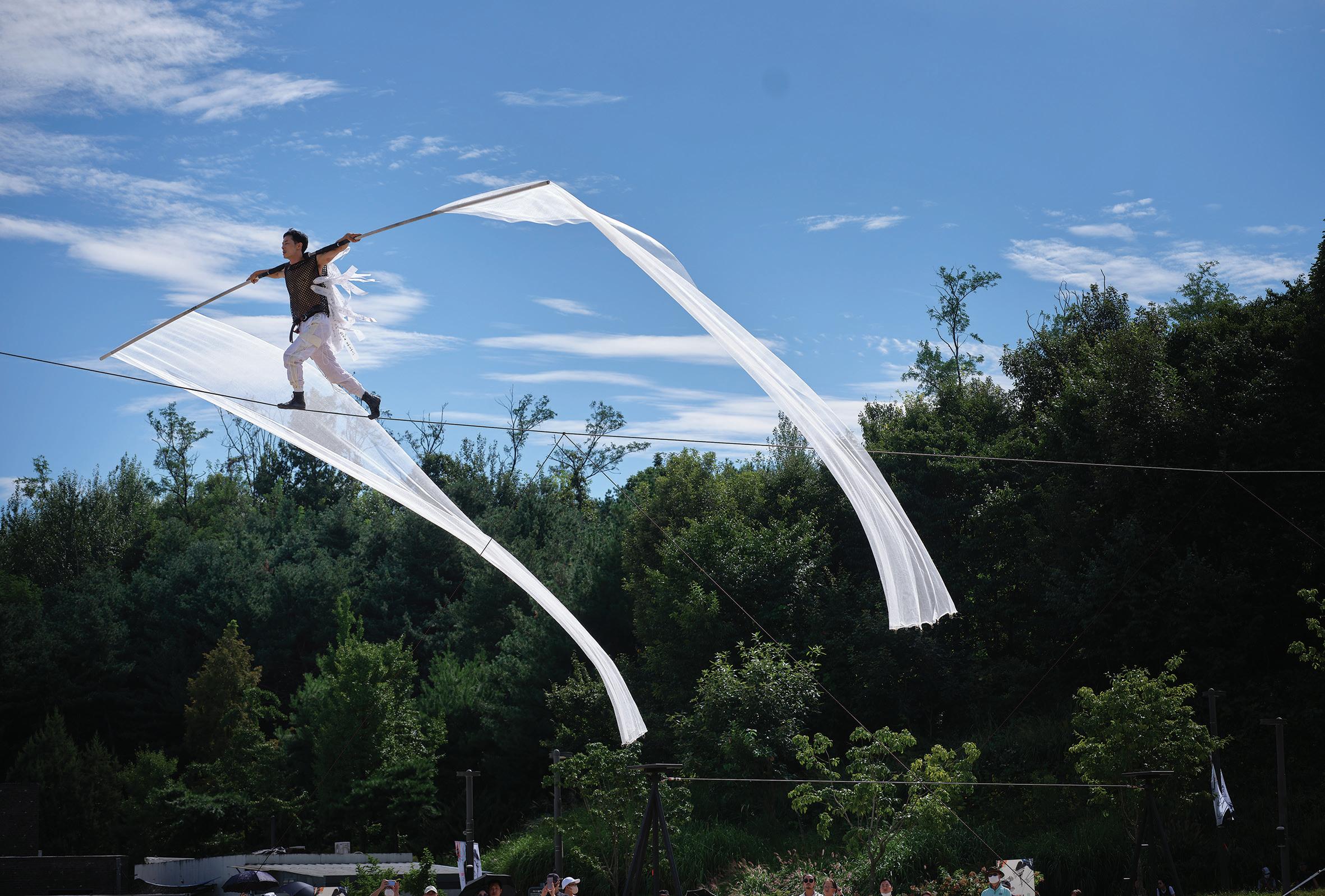
Happening this October 20th until the 22nd, be sure to mark your calendar and join in to see all the spectacular talent. There will also be numerous vendors to try delicious food and sell beautiful art that you won’t want to miss out on. Get cultured and open your eyes to the world at the 2023 Gwangju Fringe Festival!
The Author
Olivia Laurel is an English professor at Gwangju University and has been residing in South Korea since 2009. When she is not teaching, she enjoys creating art and has participated in several different art shows across the country. Her favorite medium to work with is painting with mixed media designs.

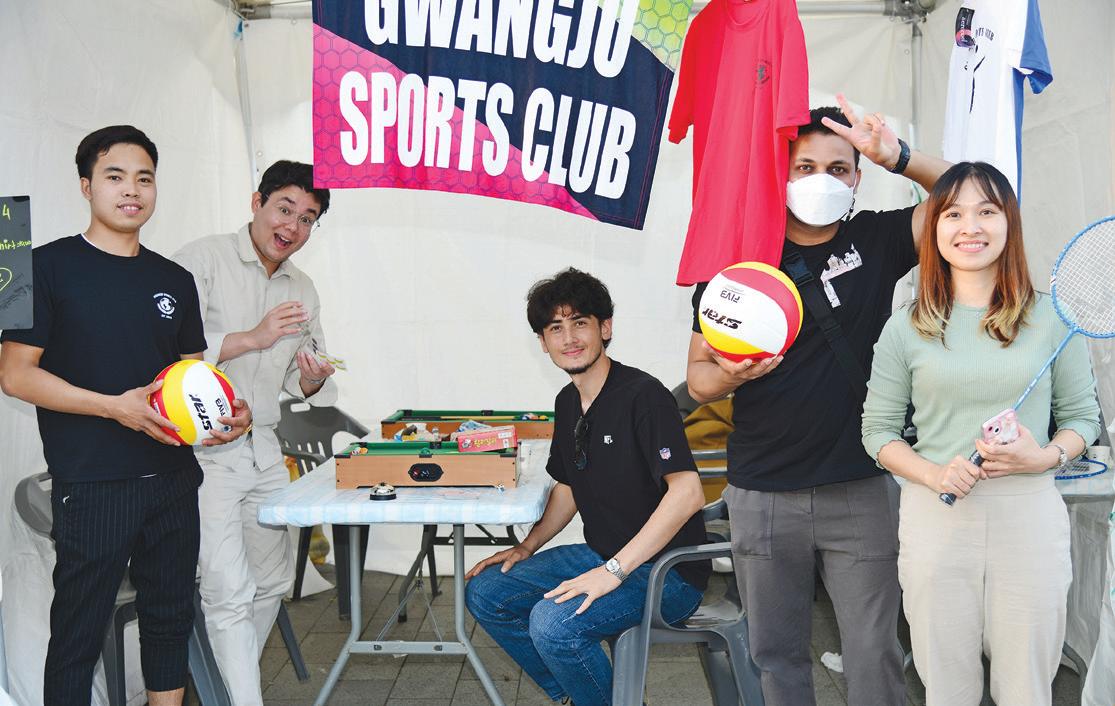 By Kim Sukang
By Kim Sukang
Do you like to meet people around the world? If yes, visit the 2023 Gwangju International Community Week from Friday the 6th to Sunday the 8th this October.
To globalize the local community, it is important not only that local citizens understand and experience other cultures, but also that international residents are willing to be involved in the local community. For these reasons, Gwangju Metropolitan City has held Gwangju International Community Week since 1994, in
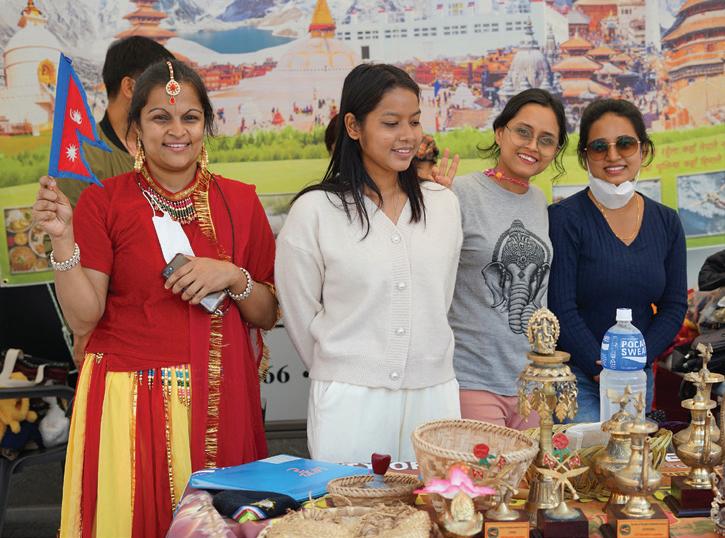
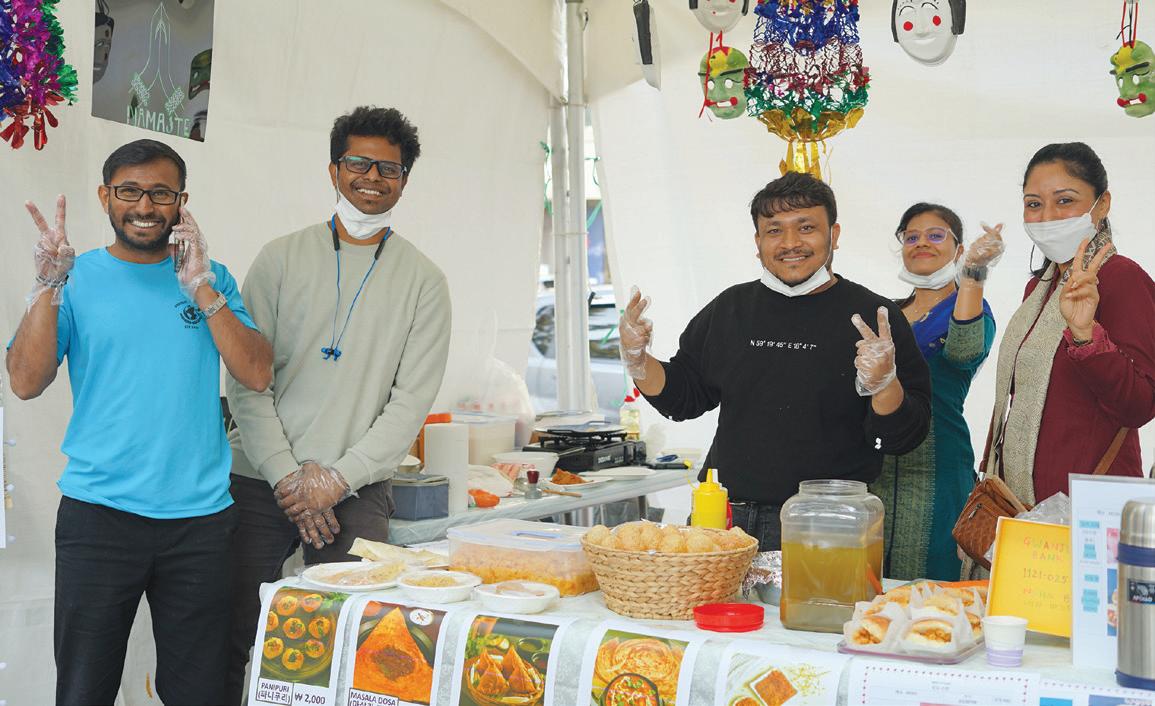
which local citizens and international residents can understand and exchange their cultures.
Here I will introduce you to programs and events at the Gwangju International Community Week.
THE FIRST DAY:
The International Community Week opens with music concerts and performances from Africa and Asia at 7 p.m. at the Gwangju Student Art Center. You will encounter music from West Africa and performances from


India, Kazakhstan, and Korea. TEKERÉ and TURON will show you traditional music from West Africa and a performance using Uzbek percussion instruments, respectively. A Korean performance crew, Yeonheedan Cheongyeon (연희단 청연), will present a stylish and exciting performance with a youthful sense of Korean traditional music.
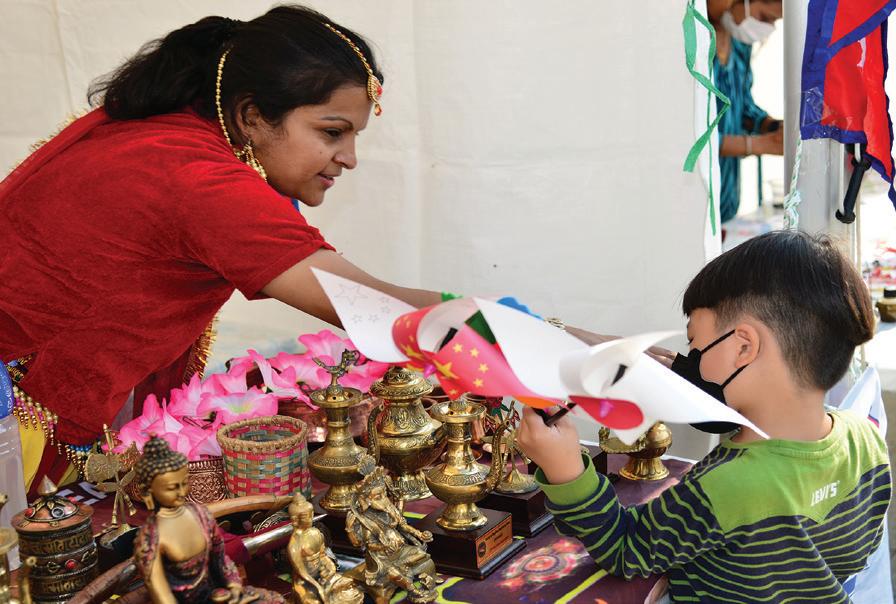
If you are interested in learning Korean, there is a lecture for you! Sun Hyun-woo, the co-founder of the famous Korean learning platform Talk to Me in Korean, will let you know how you can learn Korean enjoyably and effectively. If you are good at Korean, participate in his second lecture at the Gwangju International Center: how to learn foreign languages without ever being abroad! After the lectures, you will likely be hungry. On Art Street, a three-minute walk from the GIC, you will arrive at the “Global Pavilions,” where you can try various foods from all over the world, from Asia to America to Europe to Africa. All food has passed a strict taste test before the event, so it is sure to be delicious – trust me. After lunch, you can listen to and watch “Visible Radio” in a radio booth on Art Street. International resident DJs will share their stories about their favorite music, daily life, and their homelands.
On the last day, Sunday, October 8, there will be an interesting lecture by Jeong Chul-gyu. He is a famous comedian and multicultural expert and will explain to us in the lecture about a multicultural society. At lunchtime, you can try new food that you either did not get to try at the food booths the day before or that you want to try again. Then you can visit the “Community Villages,” where international communities are. If you like hiking, join the hiking group Gwangju Hikers. If you join the group, you will be able to hike all the mountains of Korea with them every weekend going forward. If you like board games, visit the Gwangju Board Game Club booth and join the club. They meet every Sunday to play board games. You can bring your friends! They are always welcoming of
new participants. If you like to learn new things and meet new people, Gwangju Talks is waiting for you. Gwangju Talks is a public lecture that is held every Saturday at the GIC. At 5 p.m. in the “Global Cinema,” a documentary will also play at the Gwangju Student Art Center. In the documentary Scenery (풍경, 2013), which will play that day, Chinese-Korean Director Zhang Lu asks the question, “What is the most memorable dream you had in Korea?” to 14 people from nine countries.
For more information on the programs, visit the Gwangju International Center website (gic. or.kr). The Gwangju International Community Week will also be held at the same time as the Chungjang World Festival of Recollection, so visit these two events with your family and friends and enjoy various programs. I hope to see you all there!
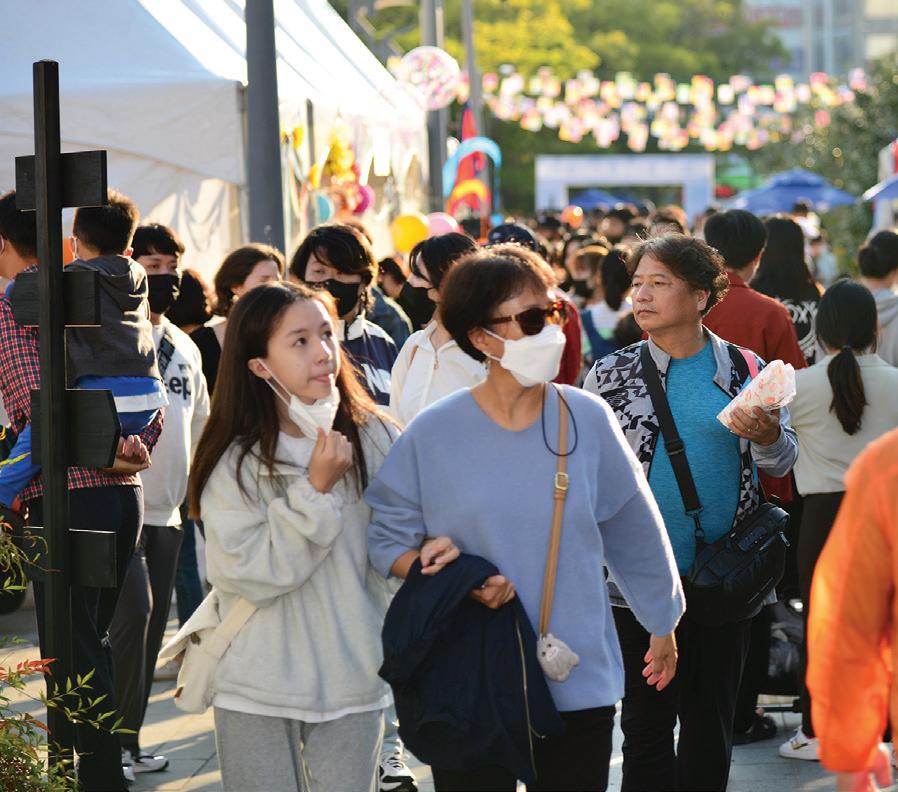
Which is the oldest hospital in Gwangju? No, it’s not Chosun University Hospital. And no, it’s not Chonnam University Hospital. It’s Kwangju Christian Hospital, which is now well into it’s second century of serving the Gwangju area. Begun as Jejungwon by an American missionary at the turn of the 20th century, the hospital proudly professes to be “the founder of modern medical science in Gwangju.” Intrigued by the advancements that it is making, the Gwangju News got in touch with the Kwangju Christian Hospital to bring you this interview. — Ed.
Gwangju News (GN): The Kwangju Christian Hospital (KCH) is a longstanding medical institution in the “City of Light” that many may not know the history of. Please introduce the hospital and its backstory for our readers.
Kwangju Christian Hospital: The KCH is the first modern medical institution in Gwangju and was established by a missionary by the name of Dr. Nolan with the Korean Mission of the Presbyterian Church based in the United States in November 1905. It began administering its first treatments in Gwangju that year, then under the name of Jejungwon, for the purpose of curing diseases and spreading the gospel.
In light of its long history, the KCH records firsts in Korea in conducting specialized treatment for Hansen’s disease, establishing a tuberculosis ward, doing chromosome analysis, establishing a pediatrics and adolescent clinic, and creating both a speech pathology program and a dental clinic. In addition, the hospital conducted Honam’s first
endoscopic retrograde cholangiopancreatography (ERCP) procedures, endoscopic ultrasound procedures, replacement transfusions, artificial joint surgeries, holmium laser prostate surgeries (HoLEP), internal medicine practices, pediatrics, orthopedics, and urology treatments, in addition to operating a rehabilitation room for young children. It was also the first in the region to publish a nursing textbook and the first in Gwangju to introduce state-of-the-art, fourth-generation surgical robots.
What is more, the history of serving the underprivileged with devotion has further compelled the institution to take responsibility for the health of Gwangju and Jeollanam-do residents, such as by offering domestic and overseas medical services, treating end-of-life cancer and mild pediatric patients, and providing professional and integrated elderly medical care.
GN: The KCH is also the first public late-night children’s hospital in Gwangju, operating in
earnest since September this year. What is the purpose of operating a public late-night children’s hospital?
Kwangju Christian Hospital: Local children’s hospitals in Gwangju usually operate from 6 p.m. to 8 p.m. on weekdays and from 2 p.m. to 4 p.m. on Saturdays, and there are no hospitals open on public holidays. So, pediatric patients cannot help but use the emergency room of the university hospitals during late-night hours and on public holidays. Not only does that give rise to having long wait times, but it also involves additional emergency fees and other inconveniences while waiting with other emergency patients. Treating young, mildly ill patients together with severely ill ones becomes difficult, as patients in need of urgent care require more timely treatment than those in less urgent situations. By treating pediatric patients at our public late-night children’s hospital, help can be administered safely at night and on holidays, making it especially easier to treat severely ill children before mildly ill ones. This contributes to improving the overall medical system for pediatric patients in Gwangju.
GN: How are operating hours and medical staff deployed?
Kwangju Christian Hospital: The KCH opens from 6:30 p.m. to 12 p.m. on weekdays, from 8:30 a.m. to 12 p.m. on Saturdays, and from 10 a.m. to 12 p.m. on public holidays. In total, it is open 365 days a year and late at night. Seven pediatricians and five pediatric nurses are deployed and treat patients according to their work schedules.
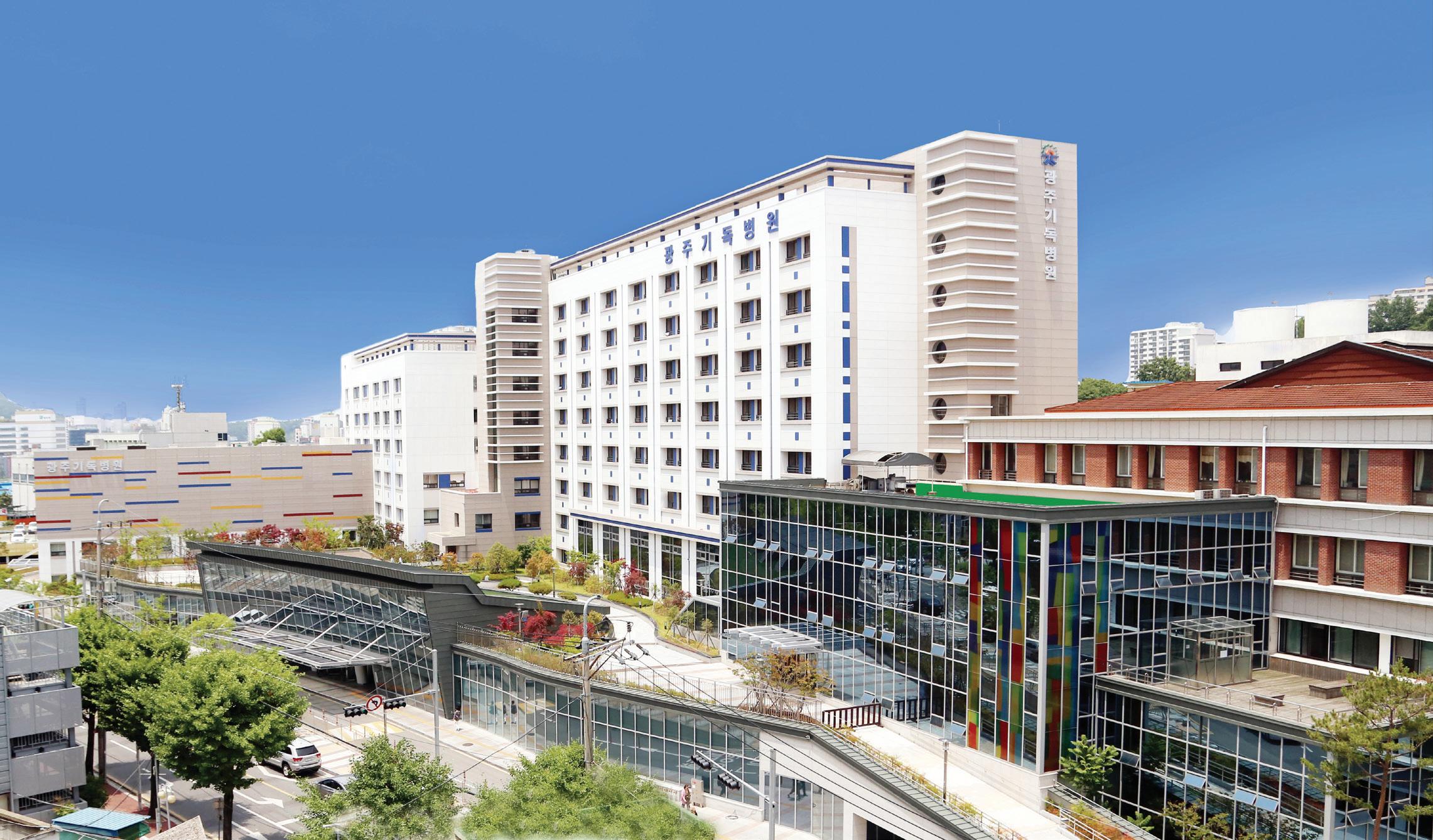
GN: Do you provide treatment in foreign languages for patients with an international background?
Kwangju Christian Hospital: Yes, the KCH treats foreign patients in medical blind spots, and English and Chinese are languages in which treatment is available. The hospital was designated as a leading medical institution for Gwangju Medical Tourism in 2020 and has performed medical checkups, urology surgeries, and orthopedic surgeries on patients of many backgrounds. To provide one example, a Vietnamese resident living in Gwangju needed surgery due to a diagnosis of cerebral aneurysm at a university hospital. Even though the surgery required significant payments, the patient
eventually underwent the necessary surgery and recovered completely after receiving treatment at the KCH.
GN: The KCH has a Christian background. What is its difference compared to other general hospitals?
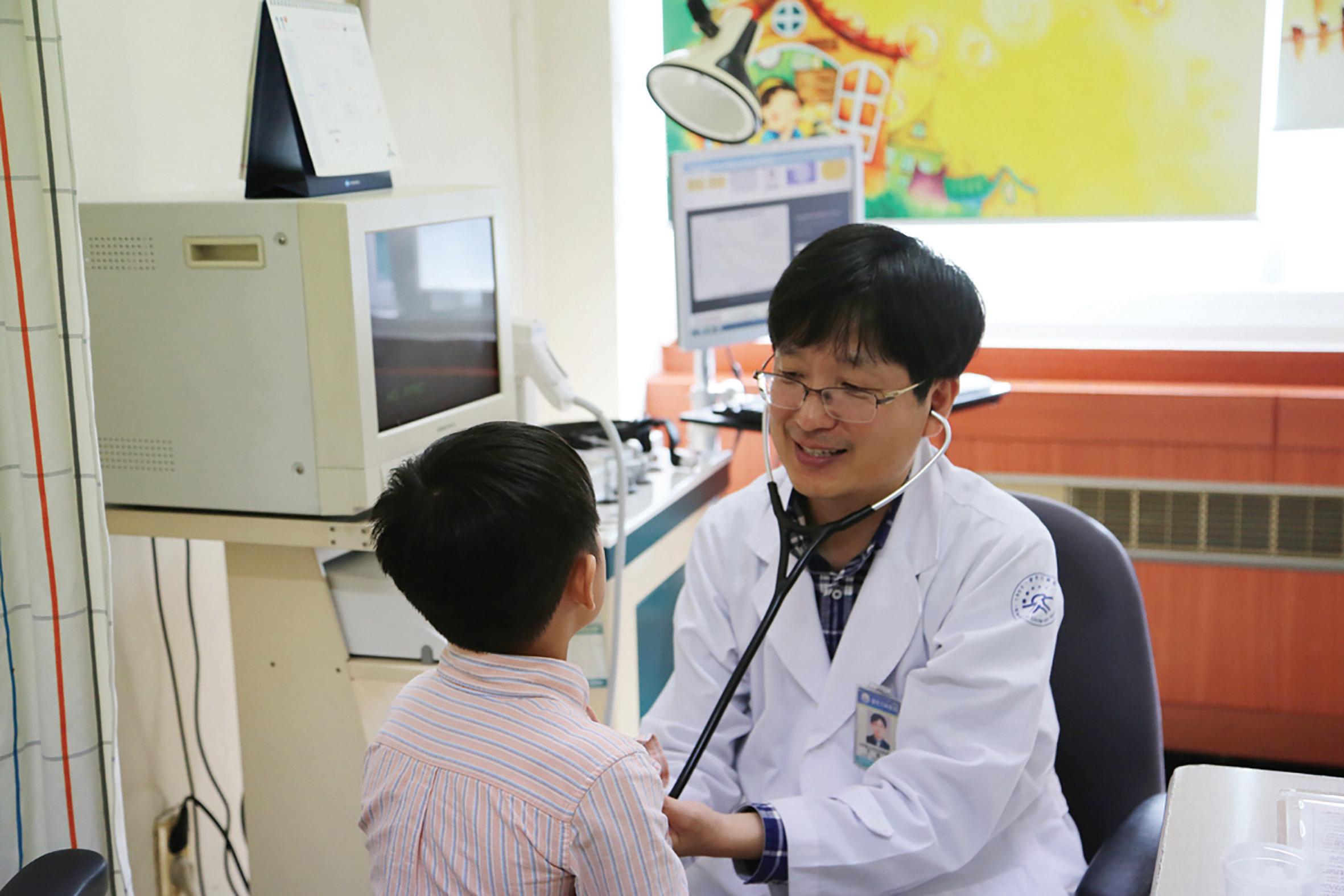
Kwangju Christian Hospital: Employees of the KCH organize a missionary association and provide voluntary donations and services in order to serve their neighbors in need. They are devoted to working across the globe. For example, emergency rescue teams are sent all around the world if a global disaster arises. They also have led in working with multicultural families by launching an internet newspaper, Danuri News. In addition to taking action overseas, rural medical services are conducted three months a year. Also, medical welfare such as Hope Relay and the Dimodecare for pastors are currently sponsored by the church.
GN: How do you want the KCH to be recognized by foreigners living in Gwangju?
Kwangju Christian Hospital: The KCH has led the development of medical care in Gwangju for a century. As being “a patient-centered hospital” that implements patient-centered medical services, all medical facilities and systems are operated mainly with patients’ safety and convenience in mind. The hospital has continuously been evaluated as the first and best institution by various health institutions and the Health Insurance Review and Assessment Service. Moreover, beds, medical facilities, and state-of-the-art medical systems, such as its robot-assisted surgery technology and rehabilitation programs, have helped it to attain certification as a medical institution conforming to patients’ stability regulations by the Ministry of Health and Welfare. Furthermore, the KCH is taking a step further as a smart hospital that communicates better with customers by establishing a KakaoTalk notification service system for making it simple and comfortable for customers to use the KCH.
Before the last of this year’s summer weather left us, I spent a week in Wando County poking around in search of sites other than the well-known Myeongsasimni Beach. In this month’s iteration of “Lost,” we’ll scale the county’s highest mountain peak, hike down to one of its deserted pebble beaches, and explore its stunning portion of a non-contiguous national park where I ran into Korean soldiers and got kicked out. So, without further ado, lace up your sturdiest footwear and follow me.
SANGWANG-BONG – PEAK WANDO
Not many visitors bother to go hiking while in Wando County, especially when the beach beckons in warmer months, but there are some impressive trails and peaks worth visiting if you have the time. For example, the big island of Wando maxes out at the 644-meter Sangwangbong (상왕봉), a lush mountain vantage encompassed by sea-spangled views. The peak has an impressive wooden deck that terminates at a pair of glass-floored cantilevers you can walk out onto for an added thrill. If you summit
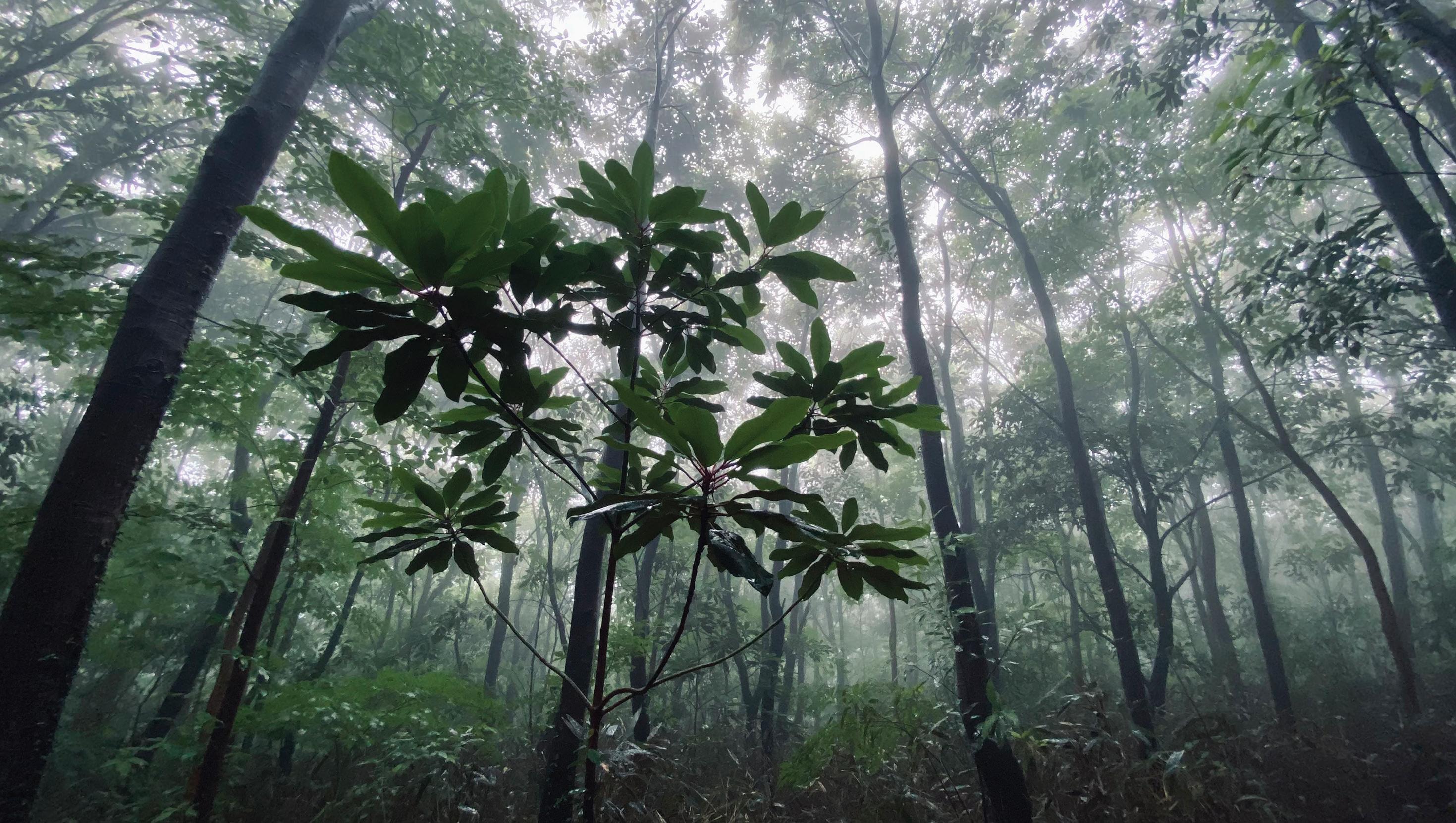
Sangwang-bong on a clear day, gazing at the islandstudded seascape will make returning home to your concrete metropolis seem utterly depressing, which it is.
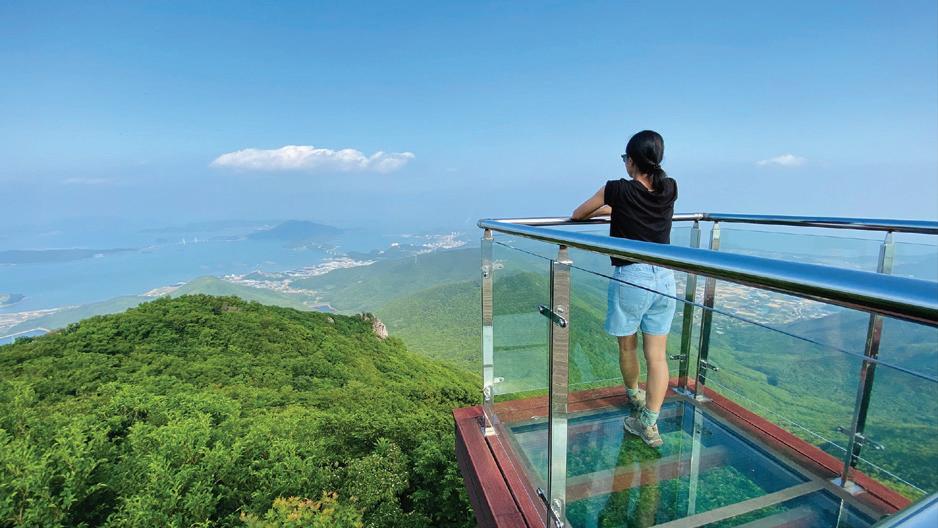
There are many trails up to Sangwang-bong, so you can pick your starting point according to your hiking prowess and desired experience. I’m a novelty hound but also incurably lazy, so I drove most of the way up and parked at the Wando Nature Forest Lodge (완도 자연휴양림), my justification being that the forest trail that begins from there is epic and otherworldly – and I’m not wrong. Like something out of Korean Dr. Seuss, there are unique
plants that only thrive in the thin subtropical sliver along Korea’s south coast. If you traverse this forest area when the mountain is veiled in mist, the eeriness will crank up to eleven and afford you some unforgettable photo opportunities. Rain or shine, taking the shortcut through this forest never disappoints.
Lesson learned: There is beauty in being lazy.
Myeongsasimni Beach tends to hog all of Wando County’s glory, so few visitors ever realize it’s flanked by excellent coastal trails that don’t get nearly as much love as they should. The coastal trail to the east of the beach leads down to the southernmost point of Sinji-do where, after nerding out on KakaoMap for far too long, I noticed a deserted pebble beach nestled within a rocky cove. I could just barely make out a faint trail that went all the way there, so I decided to spend a day hiking down to the end to see if this wild beach was any good. Long story short, the “Forest Therapy Trail” (숲 치유 길) is awesome, but the deserted beach is garbage –quite literally.

Despite facing down an onslaught of mosquitoes, ticks, spiders, and snakes, the death march to garbage beach was ironically rewarding for everything but the beach itself. To clear the forest line and actually step foot on the beach, I had to lurch through a heap of fishing-related garbage lining the shore, only to be greeted by the stench of stagnant tidepools and hordes of disgusting sea slaters (갯강구) scurrying in every direction. Resembling cockroaches, these creatures are often found along rocky coastlines that smell terrible, so I consider them a bad omen. Though exhausted, sweat-soaked, and wanting nothing more than to take a victory dip, I lost the urge and made the arduous march back to the soft, sandy embrace of Myeongsasimni Beach, where I arrived just in time to swim as the sun set.
Lesson learned: If nobody goes, there’s a reason why.
South Jeolla Province has a unique, non-contiguous national park stretching from the Yeosu Peninsula in the southeast all the way to the westernmost islands of Sinan County, and roughly in the center of

that scattered park is Wando. The unwieldily named Dadohaehaesang National Park (다도해해상국립공원) has an incredibly beautiful stretch along Wando’s south coast with one of the widest pebble beaches in the country, not to mention a coastal hiking trail containing kilometers of breathtaking views culminating at the edge of a peninsula, beyond which is a military checkpoint. I stumbled upon a few soldiers there while filming the nearby trenches, and they politely asked me to delete my footage of that area. I obliged, and they were surprisingly cool about the whole encounter. Things could have gone way worse, so I count myself lucky.
On my first visit to the park back in 2021, I looked all around but found no signs prohibiting swimming, so I swam for half an hour at the pebble beach and, just as I was drying off to put my shirt back on, a park ranger spotted me and started shouting that swimming wasn’t allowed. I told her I hadn’t seen any “No Swimming” signs, and she didn’t say I was wrong. (There were tons of signs prohibiting all sorts of things there, but none mentioned swimming.) Anyway, while she was kicking me out, she couldn’t help but share her love of the park with me, so she took me on a little tour. In a forest alcove, she picked
up some dry leaves, crushed them, and cupped them under my nose to enjoy the fragrance. I wish I could remember the name of those leaves. Next, she invited me to see the aquarium, where I gawked at its many seahorses and their peculiar prehensile tails. Then she took me to the head office, where she saw to it that I left with a park brochure. She’s an absolute sweetheart who runs a minbak in Haenam County on the side. Today we follow each other on Instagram.
Lesson learned: Swimming’s only prohibited if you get caught.

One morning during my week-long stay in Wando, I was making my way to the coastal trail west of Wando’s famed beach when a sudden downpour left me scrambling for a dry place to wait out the storm. Luckily, the main restroom at the beach parking lot had a large overhang and a single plastic chair, where I sat in front of a colorful tiled mural and listened to the rain.
Although the downpour didn’t let up for about two hours, I found the experience oddly relaxing – that is, until my stomach began churning, and I had to “lose some weight” in the adjacent men’s room. To my utter delight, I discovered that my stall had a functioning bidet. Returning to my plastic chair lighter and refreshed, I thought about what might have happened had I gotten the bubble guts midway through the day’s aborted hike. With that thought, I smiled.
Lesson learned: If you’ve gotta go, go with a smile.
Hailing from Chino, California, Isaiah Winters is a pixel-stained wretch who loves writing about Gwangju and Honam, warts and all. He’s grateful to have written for the Gwangju News all these years. More of his unique finds can be seen on Instagram @d.p.r.kwangju and YouTube at Lost in Honam.
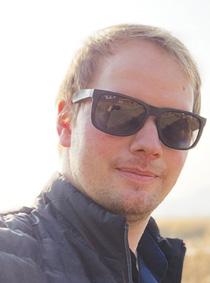
Japan has exploited its long-running position of superiority over Korea. Japan has cut corners on nuclear safety. The water from the Fukushima power plant, if the numbers are true, is totally safe. The coal power industry is responsible for far more deaths than nuclear power.
The International Atomic Energy Agency (IAEA) has forestalled nuclear proliferation. The IAEA may have been lax on testing Fukushima’s water.
The Republic of Korea cannot stand alone on the world stage and must carefully navigate international politics to preserve its prosperity and autonomy.
The scientific question is whether coal or nuclear is safer. When you consider the continual mining, smoke, and greenhouse gases, coal is quite deadly. In fact, coal power plants leak quite a bit of radiation due to naturally occurring uranium in the ore. On the other hand, the Fukushima disaster itself is proof that we should be more selective in where we deploy nuclear tech. Further, the “rushed” release of the treated wastewater and selective testing should raise eyebrows. [See Chung Hyunhwa’s article from July.] Setting that aside, the social dilemma is how we
react when an inter-governmental organization (IGO) to which our country belongs does something that people in our country oppose.
Those in favor of global governance support IGOs, and they tend to prefer single, universal institutions instead of conflicting jurisdictional battles and regional balkanization. The success story to emulate and repeat is the Montreal Protocol under the aegis of the UN. This 1989 treaty got the world away from using CFCs as a refrigerant, and before we completely destroyed the ozone layer, meaning that the sun’s UV would mostly reach the surface, burn our skin, ruin agriculture, and end all beach holidays. What worked? Monitoring and a series of incentives and disincentives. Get caught behaving badly, get sanctions. Clean up your act, see sanctions lifted. Rather than spiral into the trap of the prisoner’s dilemma, most states opted to wear their compliance status as a badge of honor. Unlike some regional currency union (e.g., the Eurozone), this international framework only worked if it was alone and worldwide.
The IAEA dates back to 1957, but to most people, it only makes the news during big events: monitoring weapons development in North Korea or Iraq, or in its endorsement of the release of the water from Fukushima. However, the IAEA’s effectiveness is in the day in, day out monitoring of the non-outliers, the countries that want to
prove to others that they are good team players, in the hopes that this will encourage others to be good or create a culture that “shames” the bad players. If you want to show the world that you have no nuclear shenanigans going on, just cite the IAEA’s publicized data on your country regarding fissile material manufacture and storage. Presto! The UN Security Council is not going to ever sanction you. Almost all South Koreans appreciate this aspect of the IAEA (or would if they knew about its role).
However, we now have a dilemma.
If you oppose the IAEA right now because it endorsed the release of wastewater from Fukushima, then you risk undermining the IAEA’s authority. If you say nothing, the IAEA may continue to side with more powerful countries, and Japan may get the green light to act unilaterally in other ways. One also has to assess the risks with limited data. Should we
accept some level of unsafe water if the IAEA remains intact? How unsafe is “too” unsafe? How unsafe is that water really?
One can question whether the IAEA is “its own thing” or merely a tool of enforcement of regulations dictated by a club of countries. Does the IAEA have an existence independent of its origins and independent of the presidents and prime ministers of powerful member countries? In international relations theory, the “neoliberal institutionalist” says these institutions have lives of their own. They create order and predictability, too. Most states will want to obey or support such institutions because having these IGOs is overall more materially beneficial than not having them. The “realist” argues that these institutions are merely reflections of the desires of the powerful member countries. The IAEA or NATO would cease to have any existence if the most powerful members withdrew their support. These organizations are merely tools, the realist argues. If one is a realist and a Korean nationalist, then opposing the IAEA is the clear
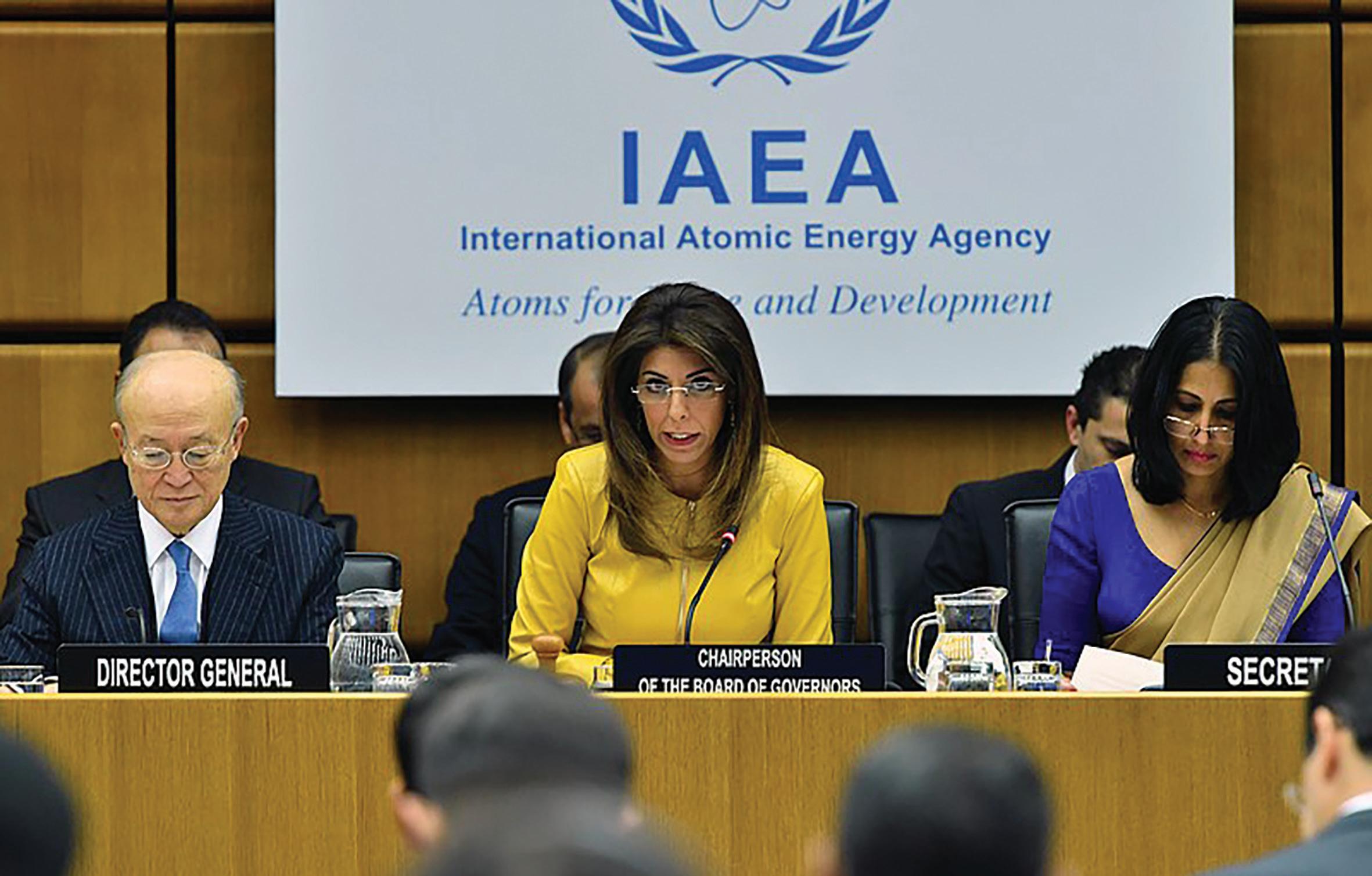
choice. If one is a neoliberal institutionalist and a Korean nationalist, things get complicated.
Area residents may have noticed banners by the Progressive Party opposing the Fukushima wastewater release explicitly and before even the big, center-left Minjoo Party did so. The least cynical way to oppose the Fukushima wastewater release is to be principled from the get-go. “Is a delay in criticism caused by deliberation or by waiting to see how to opportunistically play one’s cards in this controversy?” voters may wonder. Let’s say you oppose right-wing politics and President Yoon’s unprecedented praise for Japan. (On two holidays commemorating Korea’s independence, he lavishly praised Japan, even redefining independence fighters as not anti-Japan but anti-communist.)
You want to vote for the people who can best fight for you and who are sincere, but be sure of what you actually want. Reflect on the IGO aspect of this issue. Should it temper or strengthen your opposition to the wastewater release? Korea has to play a careful balancing game in international politics, but I think that there is enough proof now to see that not all IGOs are automatically deserving of trust.
The AuthorJonathan J. Chiarella grew up in New York. He holds a BA in history (Rochester) as well as two MAs (Chonnam, Florida) and a PhD in politics (Florida). You can spot him riding the river trails or read his analysis of current affairs related to Honam or international relations.

Day and Time: Saturdays at 2:30 p.m. Venue: Gwangju International Center Contact: gwangju-talks@posteo.net
Immigration and Integration Policies in the World
• Date: October 7, 2023
• Lecturer: Jonathan J. Chiarella
Gwangju News: Article from October Issue
• Date: October 14, 2023
• Lecturer: T.B.D.
Building Infrastructure for Whom?
• Date: October 21, 2023
• Lecturer: Jonathan J. Chiarella
Pollution and Sustainability
• Date: October 28, 2023
• Lecturer: Chung Hyunhwa
Join us for presentations by various guest speakers and Q&A on the 1st floor of the GIC. Interested in sharing your expertise? Contact gwangju-talks@posteo.net
Note: Certain weeks’ topics are liable to change slightly or move to other weeks.
Around the time of Chuseok (추석), my maternal grandmother always retells the story of the tiger and the dried persimmons, or gotgam (곶감). My grandmother’s version of the folktale goes like this: Long ago, a tiger approached a village in search of food. The tiger heard a child incessantly crying. The mother tried to console the child by offering anything and everything but to no avail. Switching tactics,
the mother warned that if the child kept crying, a tiger would come and take the child away. The child did not bat an eye and kept on crying. At her wits end, the mother offered the child gotgam and the child instantly stopped crying. The tiger, alarmed, fled the village, thinking what could this gotgam be that the child feared it more than a tiger!
Of course, gotgam is nothing to fear but a deliciously sweet fall and winter treat. Last October, my parents taught me how to make gotgam from start to finish. When I grew up in the United States, I never remembered eating gotgam. I definitely enjoyed sweet persimmons, or dangam (단감), during the fall and winter, but we could only find them in the Asian or Korean grocery stores. I was eager to learn how to make this sweet treat.
Before it becomes gotgam, it is first just a persimmon, or gam (감). My family grows two types of persimmon trees. One type is sweet persimmon (dangam), light orange and shaped like miniature pumpkins. They are firm. The other kind is daebong (대봉), persimmons that are bright orange, more elongated, spherical, and have fewer ridges. The latter are the ones used to make gotgam.
If you let daebong ripen, their opaque orange skin darkens to a more orange-red color and

becomes a little more translucent. At this stage, the persimmon is called hongsi (홍시). You can eat it as is. Hongsi is soft and very sweet. My family likes to freeze hongsi and eat it like sherbet.
To make gotgam, my parents instructed me to try to harvest the daebong before they become hongsi. To get ready to harvest from relatively short persimmon trees, I gathered a step stool, clippers, baskets, and a good playlist. Sometimes I used clippers or just plucked the daebong with my hands. Some of our trees I could climb, so I climbed away and picked the daebong. A few of our trees are quite tall, so my dad made a contraption with a long bamboo stick configured with a two-liter water bottle with a cut-out hole on the side to pick the daebong way out of our reach. The contraption works wonders and also provides an intense arm workout.
After we picked plenty of daebong, we took them back to our house. We washed them of any bugs and debris, and then we began to peel. All the skin needs to be peeled while you keep the leaf where the stem typically is as is. Then you set the persimmon upside down to dry in the sun. I initially thought that bugs would be attracted to the persimmons due to their sweetness, but my mom informed me that the outer layer dries and forms a protective coating that keeps the persimmon from being eaten by such creatures.
It is common to hang-dry these persimmons, but we had so many that we dried them on tables in our yard. Some people use dehydrators, but our family dried our persimmons out in the sun. The weather is a critical component to making gotgam in this way. It is best to dry them when it is a breezy, sunny day.
My family chooses the bangeonsi (반건시) method. This method dries the persimmons halfway instead of fully. This leaves some moisture and keeps them chewy and not so hard. As the persimmon dries, it darkens in color and forms a white powdery coating. Once they are done drying, you can enjoy the gotgam right away or freeze them to enjoy throughout the year.
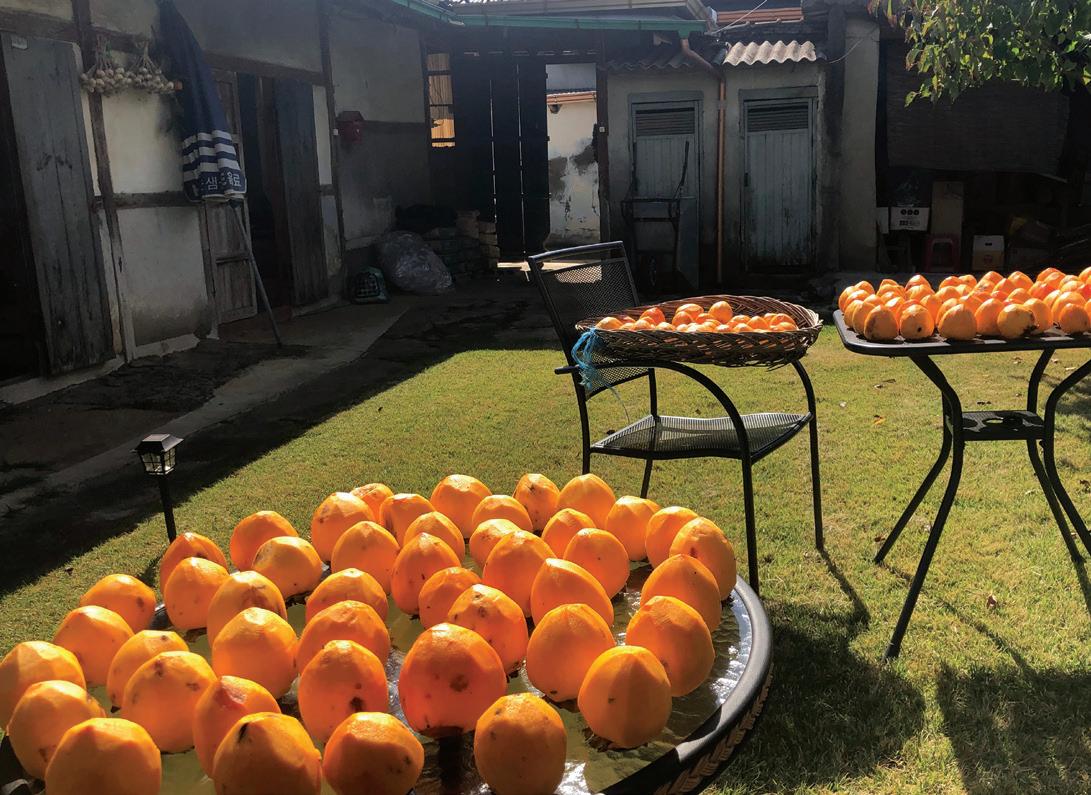
Gotgam has made for great gifts for friends and family, as they are organic and made the oldfashioned way. I also love hearing all the different versions of the tiger and persimmon folktale whenever I give away the gotgam.
This fall, I hope you will eat and enjoy plenty of persimmons and gotgam, the legendary and powerful dried fruit feared even by the tiger.
Grace Chun (전유리) has lived in Gwangju since 2022. She enjoys farming with her dad, taking film photos, dabbling in coding, and running. Instagram: @gyc_ photo
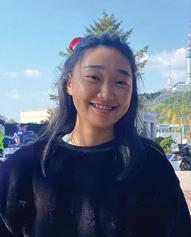
I initially thought that bugs would be attracted to the persimmons due to their sweetness, but my mom informed me that the outer layer dries and forms a protective coating that keeps the persimmon from being eaten by such creatures.Seeing all the peeled persimmons drying is quite beautiful. The Author
The World Human Rights Cities Forum is indeed international. Instead of “world” being an unnecessary reminder that foreign guests are welcome, roughly two-thirds of the confirmed invitees for this year’s opening and plenary events hail from overseas (as of the time of writing). In a more intellectual world, the paparazzi would descend on the local train station, but I offer these professional details as a substitute.
The roster reflects the home of the forum, Korea, but also the world. The less rich countries and regions are notably less able to make certain appearances. However, we should mind Olivier De Schutter’s recommendation to not consider money a prerequisite for implementing human rights. Some punch above their weight, others below.

Two guests hail from Indonesia, the mayor of Singkawang, Sumastro, and the deputy chief of staff for the executive office, Jaleswari Pramodhawardani. From sub-Saharan Africa come Emmanuel Serunjoji (veteran of local politics and current mayor of the Kawempe Division of Uganda’s Kampala Capital City Authority) and Peter Anyang’ Nyong’o (governor of Kenya’s Kisumu County and a former secretary-general of Kenya’s Orange Democratic Movement).
On the other hand, one can see that the USA that established the UN is not the same as the
USA of today, but stepping up to the plate this year is Constanza Lizana, the mayor of San Antonio, Texas. From Montreal, Canada, Arber Fetiu represents an interesting intersection of the sub-national and the international, being an international relations adviser for the municipal government of the city of Montreal within the semi-autonomous Quebec province.
International government organizations (IGOs) like the UN and the World Bank, as well as the Europeans, have both the means to implement their visions and a strong motivation to be internationalist. Once again, they have a strong showing.
Giving opening and welcoming remarks, respectively, are Gwangju’s political leaders, Mayor Kang Gi-jung and Metropolitan Council Chair Jeong Mu-chang. Previously, Kang was a three-term representative for northern Gwangju in the National Assembly. This year, Kang oversaw the implementation of the law to remove building height restrictions in Gwangju. This may evoke images of the overbearing concrete jungle, but you would theoretically conserve green space and reduce onerous transportation by housing the same number of people into fewer but taller buildings. Minimizing sprawl is therefore inherently “good,” but we will see if this change can help Kang’s wishes for Gwangju to emulate cities like Nuremberg, Germany, and Malmö, Sweden.
Education Superintendent Lee Jeong-seon will give congratulatory remarks, as will top-level members of IGOs: Nada Al-Hasif, UN deputy high commissioner; Audrey Azoulay, UNESCO directorgeneral; and Emilia Saiz, UCLG general secretary.
For the opening keynote speech, the Forum has secured the participation of Chang Ha-joon. Chang is a Korean expatriate with decades of studying, researching, and teaching economics in Britain. He is currently a professor at the SOAS University of London. His published work covers academics, wider-reaching advocacy, and sometimes both in order to fix common misunderstandings about the history of “free trade,” debt, and poverty in global politics since 1945.
Kim Joon-seop, the WHRCF Planning Committee chair, will moderate the roundtable, which features Mayor Kang alongside the chair of the Korean Human Rights Commission, Kim Mi-kyoung; and the director of the Raoul Wallenberg Institute, Morten Kjærum; as well as Vicki Felthaus, the deputy mayor of youth, schools, and democracy for Leipzig, Germany; Sumastro, the mayor of Singkawang, Indonesia; and Karolina Zdrodowska, the deputy mayor of Warsaw, Poland’s capital. The last two members add valued but non-obvious additions to the discussions.
Singkawang is unusually diverse. Unlike much of Indonesia, it is not demographically dominated by the Javanese. Although the ethnic Chinese are under half of the population, they form the biggest single group. Country-wide, however, the ethnic Chinese are much smaller, and their complex status reflects Indonesia’s complicated (and occasionally violent) ethnic relations. These relations are built or broken “on the ground,” which underlines the importance of mayors. Zdrodowska has been an open supporter of sexual minorities in a part of Europe where the past decade has seen marked “democratic backsliding” and revanchist conservatism.
For the plenary session, the UN’s special rapporteur on poverty, Olivier De Schutter, will deliver the keynote speech. [See last issue for an interview.]
After this, two panels will commence. Morten Kjærum will moderate the first panel, featuring the aforementioned Jaleswari Pramodhawardani and Serunjoji, as well as Audrey Garino (deputy mayor of Marseille, France), Cho Mun-young (professor at Yonsei University, specializing in the anthropology of Chinese and Korean workers), and Meghna Abraham (executive director of the international NGO, the Center for Economic and Social Rights). On the second panel are the aforementioned Lizana, Fetiu, and Nyong’o, as well as Ham In-sun, Gwangju City architect; José A. Cuesta, professor at Georgetown University and lead economist at the World Bank; and Attiya Waris, professor at the University of Nairobi, and an independent expert for the UN. She also writes on “tax justice” and the injustice of the race-to-the-bottom.
The roundtable and plenary session will provide an opportunity to dissect the issues and share stories of successes and challenges in an international setting. Although all speakers are highly educated, the diversity in their professions will provide multiple perspectives, allowing one to both understand the logic of relevant issues and the practical implementation of the (lofty) goal of “human rights.”
Although all speakers are highly educated, the diversity in their professions will provide multiple perspectives, allowing one to both understand the logic of relevant issues and the practical implementation of the (lofty) goal of “human rights.”
Chonnam National University Hospital (CNUH) is the largest multi-hospital system in South Korea. CNUH has a total of five medical pillars, which are Chonnam National University Hospital, Chonnam National University Hwasun Hospital, Chonnam National University Dental Hospital, Chonnam National University Bitgoeul Hospital, and Chonnam National University Children’s Hospital. There are numerous outstanding achievements attained by CNUH that can be listed. The proudest of all is that CNUH was granted a Grade A in every item of assessment of medical quality aimed at general hospitals by the Ministry of Health and Welfare in 2021. The Ministry of Education also recognized this ranking of Grade A in its management assessment and first place among national university hospitals. In line with its mission to contribute world-class medical treatment, CNUH now has a goal to thrive through K-medicine by promoting medical tourism.
Before getting into it, let us start by grasping what medical tourism is. “Medical tourism can be defined as the process of traveling outside the country of residence for the purpose of receiving medical care” (Meštrović 2023).1 Medical tourism is surely a type of high-risk travel, as the quality and continuity of care, communication challenges, air travel, and much more need to be carefully considered. Consequently, the Centers for Disease Control and Prevention (2023) listed how we can lower medical tourism risks by checking clinician qualifications, getting
pretravel consultations, bringing copies of medical records, and arranging for follow-up care beforehand.2 Generally, most of the risks depend on the destination, the medical care facilities, and the traveler’s health condition for the procedure. Despite all those risks, why do people choose to get medical care abroad? Other than the aspect of cost-effectiveness, with medical tourism, patients get access to cuttingedge technology with first-rate healthcare in shorter waiting times. Not to mention, travelers also get to explore new destinations and enjoy a long vacation at the same time.
The biggest strength for CNUH as your firstchoice hospital is the affordable price with the finest service. As finance always plays a major part in one’s decision-making, worry not – the excellent consultations, treatment fees, and so on are more economical than expected. Equally important, CNUH also provides interpreting services (English, Chinese, Vietnamese, etc.) for international outpatients. This is to ensure the patient has a pleasant stay with the hospital throughout the treatment. Besides, the minute you step into the lobby, the staff will provide a “First Visit Outpatient Service Guide” brochure. The patients are walked A to Z through all the information needed, from getting a ticket number to going home healthy. If the brochure is not to your liking, visit the Chonnam National University Hospital YouTube channel and you will get the video version of it! Lastly, CNUH is in a strategic area where everything you need is just one stone’s throw away. In terms of ease
of visitation, CNUH has spacious parking lots, and easily accessible subway, shuttle buses, and public buses. CNUH even has a pick-up service from Incheon International Airport to Gwangju if the medical expenses exceed a certain amount. Very convenient, isn’t it? On top of that, hospital dormitories and fair accommodations are nearby, too!
Not only based on CNUH’s excellent medical services but also considering the city it is located in, Gwangju, another benefit is the low costs. Compared to other big cities in South Korea, the cost of living in Gwangju is three times cheaper. Without any doubt, Gwangju is the best city to consider getting treatment in, as it has a good living environment. In addition, the cuisine is recognized nationwide as being the most delicious for its rich, authentic Korean flavors full of nutritious ingredients, which will surely suit travelers’ tastes. Next, we have the Gwangju International Center (GIC), an organization that will gladly offer its help and provide guidance to any foreigners residing in Gwangju. Lots of information can be obtained from its official website, and any inquiries can be made through email or even directly via KakaoTalk. In addition to that, last August 16, CNUH officially started the CNUH Global Supporters Program, where nine international visitors came from Kenya, Mongolia, Sri Lanka, China, India, Taiwan, and Malaysia. Apart from bringing global visitors to CNUH and strengthening the medical tourism industry in South Korea, this program acts as a bridge between CNUH and foreign outpatients.
To summarize, as one of the nine Global Supporters, I wanted to promote the hospitals and do what I could to ensure CNUH achieves its goal of being the leader of K-medicine. Over and above that, when doing some reading for this writing, I realized that not only knowing to call 112 but knowing some healthcare information is no less important, especially when we are living in a foreign country. Fortunately, I am blessed with good health and can never be grateful enough for it; even so, we never know what the future holds. It is always a good move to have
backup plans and get yourself familiar with how to handle urgent situations, since it will surely help you or even people in your surroundings. I hope this writing can be useful for international residents around Gwangju, especially during emergencies. Nothing is more depressing and scarier than being sick alone without our loved ones beside us.

1 Meštrović, T 2023, What is Medical Tourism, News Medical Life Science , viewed 30 August 2023, <www.news-medical.net/health/What-is-Medical Tourism.aspx>.
2 CDC 2023, Medical Tourism: Travel to Another Country for Medical Care, Centers for Disease Control and Prevention , viewed 30 August 2023, <wwwnc. cdc.gov/travel/page/ medical-tourism>.
The AuthorQurratu is a 20-year-old university student who is eager to explore countless cultures in the world. Also, she is very grateful for having the chance to experience Korean work culture, which will surely be an asset when entering society in the future.

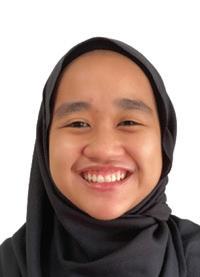
It stood stark against my pale walls looking like a grotesque monster from a horror movie. And honestly, it basically was.
The black, misshapen spot had grown since I last saw it. Due to the leak in the wall my landlord profusely refused to fix, coupled with the sweaty conditions of summer, the mold spores were incubated in the perfect conditions for growth. Despite leaving my air conditioner on, filling my apartment with box dehumidifiers, and opening the window, all of my efforts proved to no avail during my month-long absence from my apartment.
I sighed a breath of deep betrayal and resentment. As I double layered my face mask and rolled up my sleeves, I stared down my enemy, as if I was afraid it would multiply instantaneously the second I took my eyes off of it. I thought I had tackled the issue before – when it was much smaller and with a natural solution of vinegar and baking soda. However, seeing its resurgence ignited an angry flame inside of me. I wanted it gone. I wanted it gone for good.
With the mold spray I bought off of Coupang in my right hand, I aimed directly at the unsightly splatter. The deadly chemicals shot out from the nozzle with an unparalleled force and filled the air with the smell of bleach. My fifteen-minute timer counted the seconds as each passing number lasted an eternity. After waiting the
instructed time, my left hand, gloved with the bright pink plastic from Daiso, took a wad of paper towel and wiped the mold off.
I emerged victorious.
Yet, the victory lasted maybe two, three minutes at best. When I lifted my head, I could start to discern something strange on the flap of my air conditioning unit. It was dark, and it was spotted. The panic came bubbling up as my brain went into a frantic haze. What is this? What could this mean? With my phone flashlight illuminating the way, I peered into the unit, only to be met by my enemy hidden deep in the trenches: mold.
I gave up in defeat.
While this raging war resulted in a consultation with an air conditioner cleaning professional, not everything was lost. Upon deeper reflection, it became apparent that this annoying and toxic hindrance served as a sub-par role model for life. After carefully analyzing my strategy notes, I was able to discern three important life lessons we can learn from mold.
1. Stand out
One of mold’s most prominent features is certainly its visibility. When it enters a room, with each step it takes, each growth, it pulls the audience in with its charisma. We are awakened
from our deep conversations and our gaze is forced to follow its slow, destructive trek. Everyone is captivated – completely entranced. Its presence is known and undeniable.
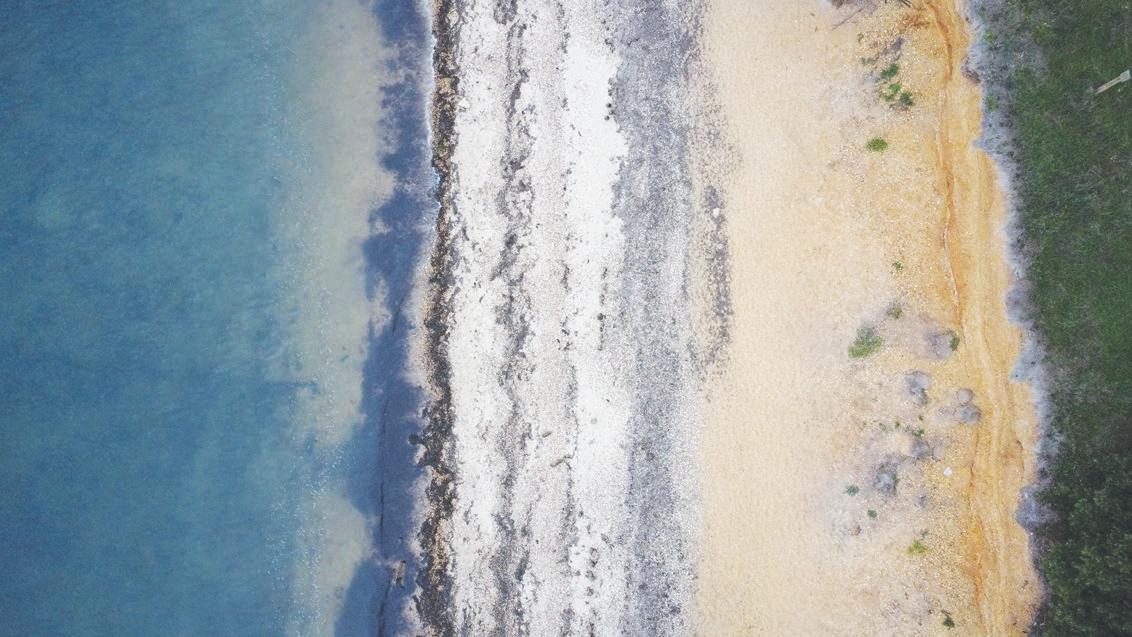
As such, mold is a perfect role model for those who strive to be the center of attention. Whether you choose to wear a warm, oversized sweatshirt or a nicely fitted blazer, be sure your clothes drape you in a sense of comfort and security. Your personality should shine through. Even if feelings of nervousness or uncertainty are present, ensure that your head is held high, as if balancing an imaginary crown. As you watch the world unfold, your confidence will slowly grow, and the anxiousness will fade away.
and believe in your own abilities. Though selfcare and hard work, perseverance through these patches can also cause a proliferation in your own journey.
Even after being blasted with deadly chemicals, there is always a chance that mold can make a reappearance. The tiny particles still cling to the wall, waiting patiently for the perfect time to multiply once again. Some even say that when mold returns, it returns much larger and sinks much deeper into the material. It returns with a vengeance – a punishment for the first attempted eradication.
Life is certainly not easy. Sometimes a storm comes, and it completely knocks you off of your feet. And that is okay. It is okay to lie there, to rest, and to catch your breath. Feelings should be freely released on this path to healing. By resting the soul and filling our body with the proper nutrients, we can return better than ever. We, too, can return with a vengeance.
The conditions mold grows in are not necessarily desirable to the average person. Whereas I can barely walk down the block without complaining during Gwangju’s humid summer, mold thrives in warm and humid environments. In these humanly unfavorable situations, mold takes advantage and reigns supreme. It weathers these tough situations and leaves a lasting mark where it stood.
Similarly, the world can be a myriad of circumstances and situations. As if directly from gossip queens and kings themselves, words can take deadly aim no matter what age. Navigating through adulthood sometimes resembles navigating through politics. The once-believed best friends can quickly morph into strangers, while the nearby grocery store worker can become an integral part of your life. Jealousy can lurk in the wild, but so can support. Regardless of the conditions, it is important to readjust
As a writer, Francesca Duong, strongly believes in the power of narrative as a platform for truth and discussion. She loves lengthy conversations, being involved in the community, and discovering delicious foods.
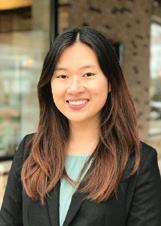
Even if feelings of nervousness or uncertainty are present, ensure that your head is held high, as if balancing an imaginary crown.(Photo by Rhys Muir on Unsplash)
The title of this article makes the case that help is a two-way street. It means the same thing as “One hand washes the other” and “Scratch my back and I’ll scratch yours.” A simple paraphrase for the intended signification here would be something like “Treat me nice and I’ll treat you nice.” The principle of cooperation and collaboration conveyed here underpins the mission statement of many a corporate entity. “Doing well by doing good,” which sort of puts the same idea in a roundabout fashion, happens to be what Gwangju and the Gwangju International Center (GIC) already live by and up to. It may very well sum up the corporate social responsibility jointly assumed by these two closely related sister entities.
The GIC’s intercultural volunteering for the Gwangju-Jeonnam region and beyond apparently exemplifies the lofty ideal of doing well by doing good. The Center’s intercultural volunteerism plays a huge role in making the region a shining example of a beautiful salad bowl of a community embracing residents from diverse cultures, many of whom are expat transplants from outside the country. Indeed, the GwangjuJeonnam region is well on its way to becoming a utopia of multicultural pluralism. This surely is a big-time payoff for the Center’s home base of the Gwangju-Jeonnam community.
It is interesting that this ideal also manifests itself in labor-management relations. Doing well by labor is also doing well by management. The
modus operandi of the kind embodied here is at work to a far greater degree than is commonly realized by the general public. It is established beyond a shadow of a doubt that equitable treatment of workers is a necessary condition for the normal functioning of any viable corporation or community. The powers that be, including policymakers, thus must always be quite cleareyed about the pivotal role the working class plays in the creation of a community’s socioeconomic wellbeing.
We are forever in debt to farmers, fishermen, delivery truck drivers, factory workers, construction crews, handymen, housewives, you name it. Toiling and moiling day and night, farm workers grow the lion’s share of what we consume for daily sustenance. The fact is that our very existence as earthlings would be at risk if not for their sweat, tears, and blood. That is basically why their work matters so very much to all of us.
Fishermen also serve to help feed billions of mouths around the world. They have been hauling in bountiful catches for countless generations since time immemorial. They bring in all sorts of seafood, lending a hand to help solve the global problem of hunger and poverty. According to Oceana, a foundation dedicated to ocean conservation, restoring the oceans to the traditional normal could feed one billion people a healthy seafood meal each day. That would amount to a substantive contribution to the alleviation of global hunger and poverty. And simultaneously to
nutritional enrichment for everyone everywhere, to boot.
Thus, ocean-based food resources would count for almost as much as land-based food resources. Keeping both troves of resources from ever drying up is thus an urgent imperative of the day. We must do everything in our power to keep them both at the current level of availability at the very least. Admittedly, getting that done is a whale of a challenge calling on us all to do whatever we can.
This is where environmental protection comes in. If land and sea are to stay stable as the goto sustainers of humanity plus all other living beings on earth, very good care must be taken of
our environment, both on shore and off. To that end, all our surroundings must be kept safe from overexploitation, deprivation, and contamination at any cost. Here, however, we are confronted with the uncomfortable truth that a thoroughly wholesome environment has become something of a luxury that comes with an enormous price tag.
In this connection, let me make the point that our whole future hangs on whether we are ready, able, and willing to foster and maintain a genuinely pristine environment. It goes without saying that such an environment must be completely free of any trace of contamination. For that to materialize, we must never ever shy away from

giving any quarter to polluters, be they industrial farmers, livestock raisers, or slash-and-burn croppers. Whatever is powered by fossil fuels should also be similarly frowned upon. Airliners, ocean liners, automobiles, and coal-fired power plants are among the major villains that come to mind here. High-rises follow close behind, nipping at the heels of these extreme fossil-fuel guzzlers.
When it comes to industrial farming and livestock raising as polluters, agricultural runoff naturally comes up as the dominant issue. It collects whatever pollutants it comes across on its way to nearby streams before reaching the sea, contaminating everything in its path and simultaneously getting itself contaminated thereby. Oftentimes, underground aquifers also suffer, tainting a whole bunch of precious water to the point of it becoming not quite fit for human consumption.
At this point, let us spare a moment and talk about the way parts of the environment are often linked inseparably each to the other. Insecticides sprayed on farms, fields, or forests often kill off plants there, flowering ones included, which eventually results in a total collapse of all bee colonies therein and not too far therefrom. The painful result of the whole thing here is very well summed up by the proverbial phrase: “No bees, no honey.” In fact, not just no honey but also no pollen, which happen to be two of the cleanest nutrient-loaded organic sweeteners ever known to humankind.
You can see that the culprit pollutants here contaminate not just soil but also water everywhere. The sad thing is that such wholesale environmental contamination can do irreparable damage to two of our most precious food resources, which respectively are land- and ocean-based. Furthermore, it can so utterly disrupt the environmental status quo as to expose us all to horrible consequences like an earth too hot and/or too cold for any living being to inhabit. This is what makes environmental conservation such an all-consuming issue for the entirety of humanity. Doing well by nature
is, indeed, the ultimate form of doing well by all living beings, not just humans.
Every one of us must pitch in to the best of our ability or we shall all perish together. We cannot just stand by, can we? The alternative is to let a terrible apocalypse overtake us and upend all human civilization as we have known it. At the end of the day, ecologism apparently is thus just a super-sublime manifestation of egoism and altruism put together. To join in the do-ordie campaign for the environment is hence the noblest way to care about all living occupants of our home planet, including us humans.
Let me close this article by issuing a call to action to the GIC and the whole of the GwangjuJeonnam region and beyond to once again renew our commitment to the environmental cause. If we at least let nature alone, nature will let us alone and leave us bask in peace and prosperity. Only a healthy natural environment can ensure a safe path for humankind to survive and thrive. And only when fully alive and kicking will nature be able to embrace and accommodate us all in her nest. Once diseased, nature will no longer be able to afford to shelter and nurture us the way she normally would.
The AuthorPark Nahm-sheik has a BA in English from Chonnam National University, an MA in linguistics from the University of Hawaii at Manoa, U.S.A., and a PhD in applied linguistics from Georgetown University. He is now a Professor Emeritus after a long and illustrious career at Seoul National University as well as President Emeritus of the International Graduate School of English.

Doing well by nature is, indeed, the ultimate form of doing well by all living beings, not just humans.
 By David Shaffer
By David Shaffer
Every teacher wants to be outstanding in their profession, but does everyone want to put in the required effort? In our earlier installments on the topic of good teacher traits, we concentrated on the more obvious ones. Here, we look at some that are less discernible but still very potent in the effect that they can produce. As you read through the article, please take the time to engage with the Moment for Reflection sections.

Being patient has never been my strong suit. I guess I take after my father in that respect. But patience can be learned, and as a teacher, I learned patience once I realized how valuable it is in teaching a language. A case in point: When we ask a question in class, especially a yes/no question, we inherently expect a rather quick reply – all they have to do is say “yes” or “no,” we think. But the student has to do a lot more. They have to decode the teachers question; they have to think of an answer; they need to construct an answer in English, keeping grammaticality in mind; and they need to think of how to best pronounce what they want to say. This takes time, and if the teacher is patient and gives them this time, learning will take place. This is a prime example of where “Silence is golden” holds true. By being patient, the teacher creates a safe and
encouraging classroom environment for the students. We’re all familiar with the student who makes the same grammatical error over and over again, even though we have corrected their error time and time again. But we need to show tolerance. Learning a language item is not instantaneous: It takes time for the student to “unlearn” the incorrect rule that they have formed before they are able to replace it with the correct form. Again, patience is called for on the
part of the teacher. Every student is different. Even though all the students in the class may be the same age, the same gender, the same height, and have the same hair color, their second language proficiency is sure to be different. As teachers, it is easy for us to fall into the trap of recognizing the higherproficiency students in the class as “standard” and expect the other students to meet that standard.
(Why? Because they have the same hair color?!). Rather than have unrealistic expectations, we need to be patient and allow the lower-proficiency students to advance at their own pace, just as the higher-proficiency students will advance at their own pace. Teacher patience creates a favorable classroom environment, which in turn, creates motivated students.
→ Moment for Reflection: How much patience do you exhibit in waiting for students to answer questions, to fix repeated errors, and to improve at a realistic pace?
are understanding of their situation or point of view and if you are being truly empathetic. If you are, the students will pick up on this, and the classroom learning environment will be that much more positive, warm, friendly, and motivating for the students.
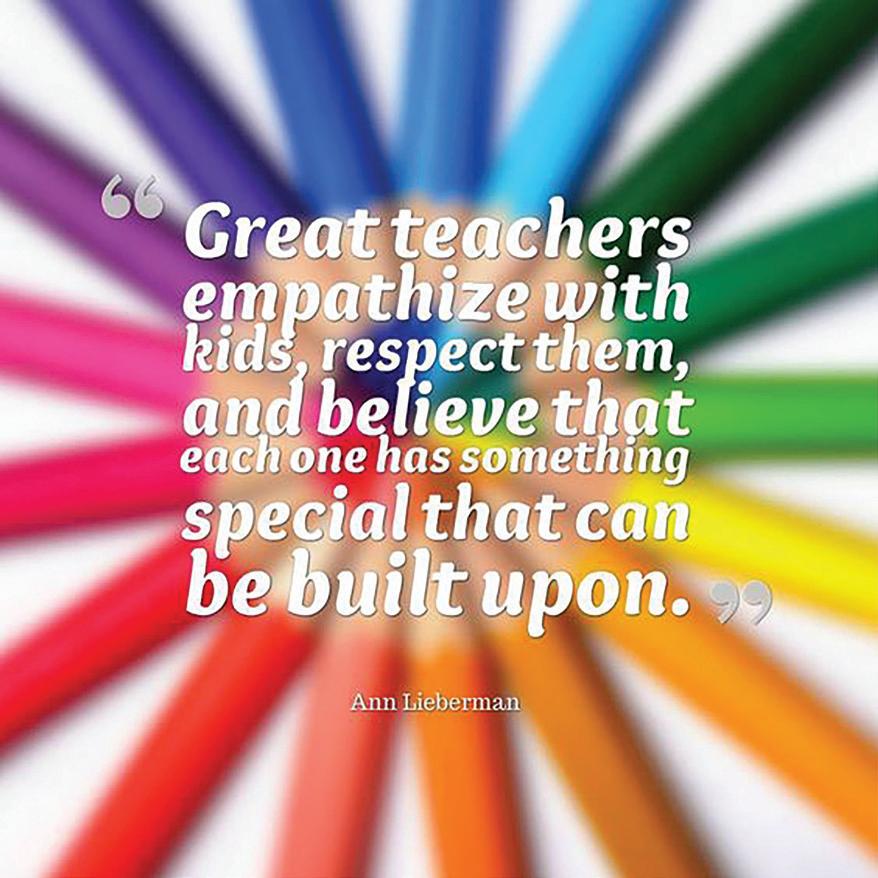
→ Moment for Reflection: How much of the time do you spend trying to understand your student’s problems from their perspective and being empathetic as opposed to relying on your own perspective as a teacher?
Viewing situations from the students’ perspective is one of the things that requires a degree of teacher flexibility, but there are quite a few others. Very rarely does a lesson proceed exactly as the teacher has envisioned. The activity you prepared may take much longer to complete than expected. Student questions may take much longer than the allocated time. What to do? Rush through the rest of the lesson plan to get everything “in” in the little time remaining because that’s what the original plan was? Or do you exhibit flexibility by continuing at the students’ speed rather than that spelled out in your lesson plan? The knowing teacher will choose the latter, being aware that little is learned when material is hurriedly presented.
Let’s begin by saying what empathy is not: Empathy is not the same as sympathy. Sympathy is saying “I’m sorry to hear that” or “That’s too bad.” It is a feeling of sorrow or pity for another’s misfortune – but from their own perspective. Empathy, on the other hand, is the ability to understand another’s thoughts and feelings from the other’s perspective. Teachers need to understand their students, and they need to show that they truly understand their students. This can be challenging when the class meets only three hours a week or less. And it can be especially challenging when the teacher’s first language and home culture are quite different from those of their students. But the effort needs to be made because students will notice if you
An excellent example of adaptability is that sparked by the pandemic when suddenly all in-person teaching was mandated to go online. It was the flexible teacher who adapted to the new, unfamiliar teaching environment most quickly and most adequately. The transition was not trouble-free for anyone, though. However, it was the flexible, adaptable teachers who most effortlessly and most readily solved their classroom-to-online teaching conundrums.
→ Moment for Reflection: On a scale of 1 to 10, how flexible/adaptable are you as a teacher? Can you think of a prime example from your pandemic teaching experiences?
This is related to the above but will get separate mention here. Open-mindedness is the readiness to consider something without a preconceived opinion. What is so easy for a teacher to do is to fall into the trap of using the least demanding procedures in teaching or teaching the way they were taught rather than adopting new and improved teaching methods that are so often being developed. Having teaching routines is commendable; closed-mindedness, however, allows those routines to morph into ruts.
Being open-minded with your students is especially important; it is advantageous in creating a safer, more nonthreatening classroom environment. When a student comes to class late, do you immediately think that it is due to them partying the night before? When a student turns in their homework late, do you immediately dock them points without asking for the reason? They may have very good reasons for their lateness. Get to know your students. Ask them for their opinions on what types of topics interest them, what types of activities energize them, and what types of media motivate them. Teacher openmindedness leads to more student learning.
→ Moment for Reflection: On a 1–10 scale, how open-minded do you consider your teacher self to be? Can you think of five good examples?
Again piggybacking on a previously mentioned teacher trait (i.e., open-mindedness) is curiosity. The teacher with curiosity asks their students questions to find out more about them, about their most-enjoyed activities, about their mostliked learning styles. Teacher inquiry into their students shows that the teacher is truly interested in the students and, in turn, creates student motivation.
Curiosity is asking why. Why do so many students make the same grammar error? Why do they use that word with a wrong meaning? Why don’t they have any questions for Q&A time? The curious teacher will search for and discover the answers to these questions, and then adjust accordingly.
Contrary to popular opinion, curiosity did not kill the cat, instead it can liven up your classroom as well as level up your teaching methods.
→ Moment for Reflection: Are you as curious as a cat? How many language teaching-related items have you been curious about in the past week? How many have you followed up on, searching for an answer? How many have you found the solution to and put it into action?
If curiosity is asking why, then creativity and resourcefulness are about asking yourself what and how. It is very rare that a teacher will have all the materials that they would like to have for their classes. They can just accept the status quo and do without, or they can search for a substitute solution, as a creative teacher would do. If the board on the wall is too small to accommodate enough students, the creative teacher will ask themself “What can I do,” come up with a solution, and then ask “How can I do it?” The result may be an individual whiteboard for each student made by just laminating an A4 sheet of paper! Creativity! Another teacher would like puppets for each student. The teacher has the students each draw a face on a sheet of paper, cut it out, and glue it to a wooden chopstick. Voila! A puppet! The activity in the coursebook is too teacher-centered and on a topic of little interest
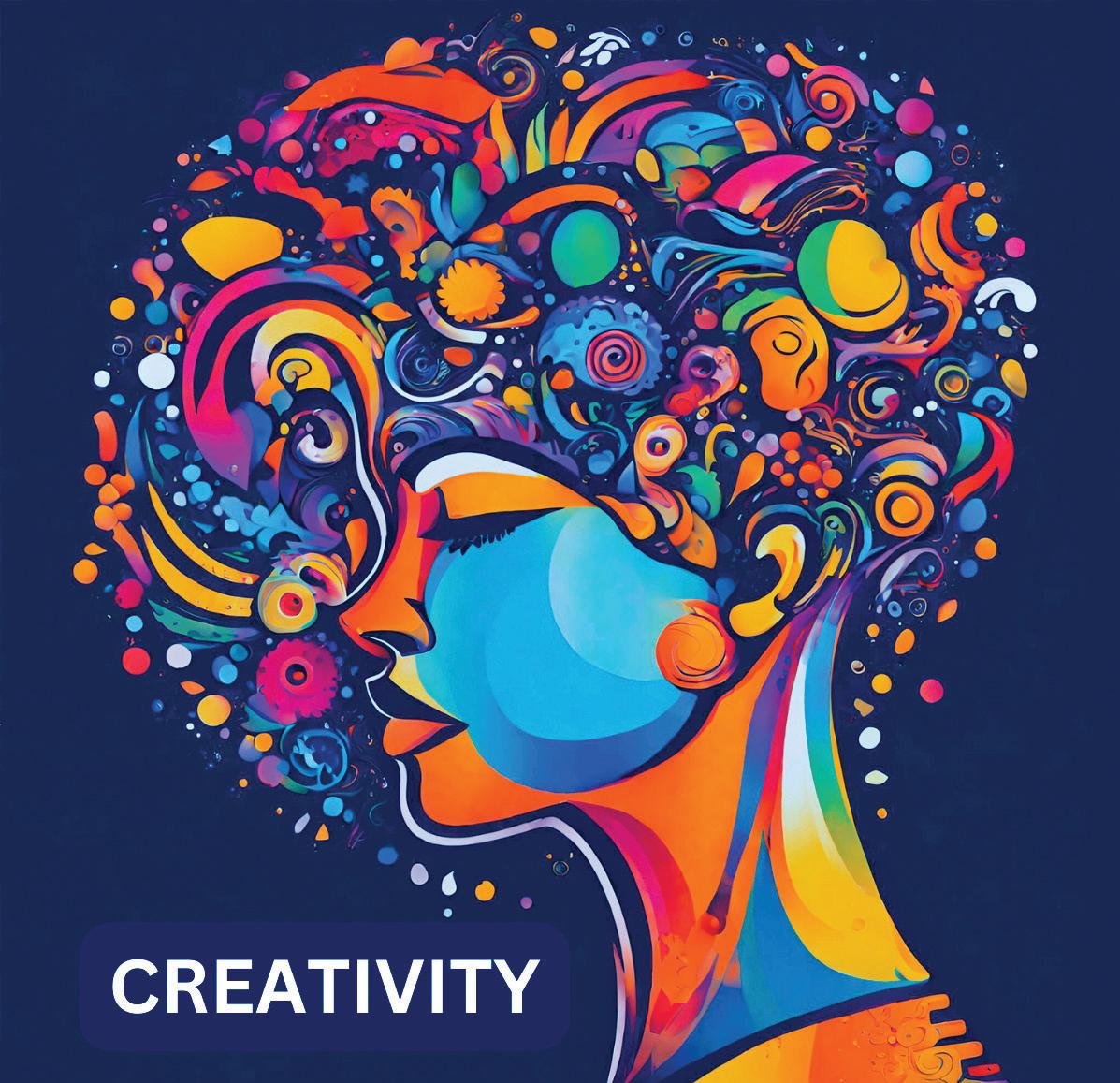
to the students. The creative teacher will change it up to make it more student-centered and on a more interesting topic. More teacher magic!
→ Moment for Reflection: What have you done in the past month to demonstrate your creativity and resourcefulness?
The classroom without humor can be b-o-r-in-g. Humor can help keep the students alert and motivated, and help to create a safe and nonthreatening classroom environment. However, there is a fine line between being a humorous teacher and a clown. A humorous teacher acts professionally; a clown in the classroom does not. I will never forget passing by a university teacher’s classroom and seeing him prancing up and down the aisles. I’ve always wondered how this could be related to his lesson, or what educational value it might have had. It seemed like the teacher was more interested in keeping the class laughing than in teaching them English. Humor should have some pedagogical purpose. Adding a sprinkling of humor is a good way to garnish any lesson plan.
→ Moment for Reflection: Do you interject a proper amount of humor into your classroom teaching? Is it helpful in creating a favorable learning environment?
Being professional encompasses a wide variety of items – from the way one dresses to keeping up with the latest developments in one’s field. Being professional is more than just what the teacher considers it to be; one must take into account the students’ concept of what a professional teacher is like. Wearing shorts and sandals may be acceptable for a teacher in Florida, but students in Korea would not expect that from a teacher. Working with students in a culture that is different from yours requires close observance of what teachers of that culture do and consider to be professional conduct.
→ Moment for Reflection: Are you doing all that you can do to demonstrate professionalism in your work? Name five areas in which you consider yourself to best exhibit professionalism as a teacher.
The classroom teacher is concerned about their students; they are concerned about preparing their daily lesson plans; and they are busy correcting homework and grading tests, often until late at night. They are so busy thinking about their classes and their students that they forget about themselves. It is the healthy teacher who is the better teacher. They will see that they get enough exercise, get enough sleep, eat nutritious foods, and get enough rest and relaxation.
→ Moment for Reflection: Do you take enough care about you physical and mental health? Name five ways that demonstrate that you do. In what areas could you do better?
In our previous articles on great teacher traits, we discussed 15 items. They are listed here for your convenience and for your reflection:
• Understanding of the subject matter
• Using current teaching methodology and techniques
• Using a well-balanced teaching approach
• Being a lifelong learner
• Belonging to a professional learning community
• Having a passion for teaching
• Knowing one’s students
• Understanding students’ needs
• Knowing how to engage one’s students
• Creating an environment for learning
• Incorporating technology
• Excelling at classroom management
• Having cultural competence
• Having good communication skills
• Having good organizational skills
The Author
David Shaffer, PhD, has been involved in TEFL, teacher training, writing, and research in Gwangju for many years as a professor at Chosun University. As vice-president of the Gwangju-Jeonnam Chapter of KOTESOL, he invites you to participate in the Chapter’s teacher development workshops and events (in person and online) and in KOTESOL activities in general. Dr. Shaffer is a past president of KOTESOL and is the editor-in-chief of the Gwangju News.
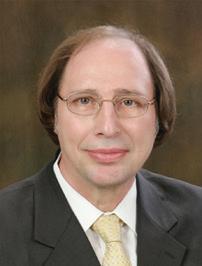
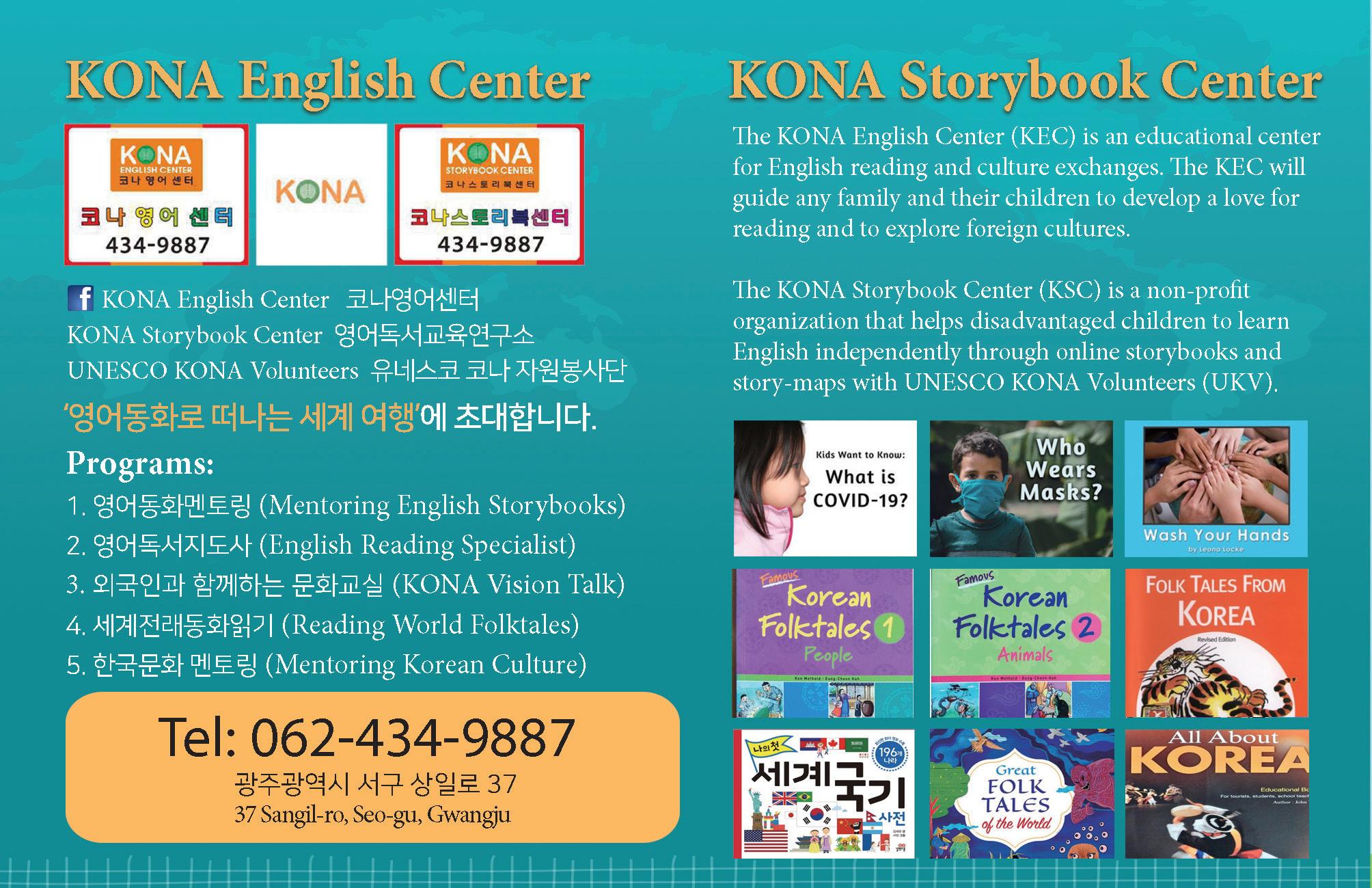
Gwangju-Jeonnam Regional Conference
• Date: October 28, 2023 (Saturday)
• Conference Theme: Undead ELT?: Humanizing Language Teaching in Postnormal Times
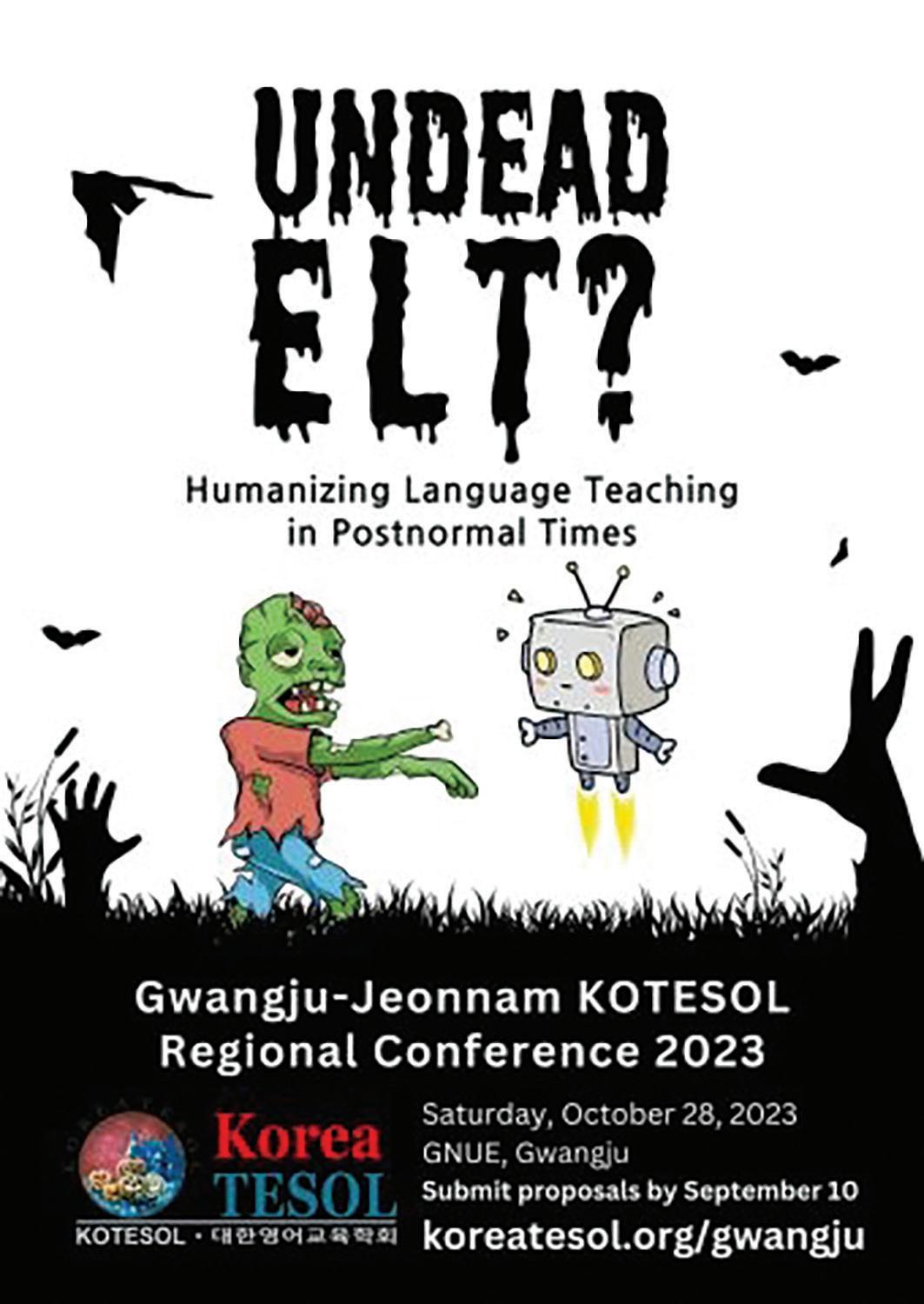
• Venue: Gwangju National University of Education
• Website: https://koreatesol.org/content/ gwangju-jeonnam-kotesol-regionalconference-2023-0
Check the chapter’s webpages and Facebook group periodically for updates on chapter events and other in-person and online KOTESOL activities.
For full event details:
• Website: http://koreatesol.org/gwangju
• Facebook: Gwangju-Jeonnam KOTESOL
 By Kim Yul
By Kim Yul
Every child in the world is born with mathematical instincts. They can count, recognize, and compare all sorts of numbers and amounts. Children instinctively begin to count and distinguish between the big and small numbers, similar to when they learn a language. For example, research tells us that by 6–12 months of age, children can recognize small groups of numbers without counting. The fact that children count their footsteps as they climb stairs or walk down the street, or that they say the biggest number that they know when they try to get something, is a very natural phenomenon. These behaviors are common in most children, and the Montessori educational method has created a variety of devices for the natural evolution of these children’s mathematical thinking.
Through the developmental stages and sensitive periods that vary according to the age of children, their way of thinking develops from concrete to abstract. Along these developmental stages, the Montessori mathematics process has changed in many ways. Since children in a sensitive period cannot think abstractly, they have to learn precise, basic concepts. Children develop their own mathematical minds through clear mathematical concepts such as solid numbers and amounts. Based on the Montessori education philosophy, many materials in the early childhood classroom
are hand-operated work, and children make and absorb the concepts through these sensory materials. The approach through the process of touching and feeling with one’s hands is very logical and effective. Children develop concrete concepts and establish a solid foundation through this process that can be seen by themselves. After completing this process, children move to abstract thinking, and their thoughts become broader.
As children enter the second stage of development, the materials for mathematics in the classroom become more diverse, and their contents become more numerous. Through new materials such as bead frames and stamp games, children learn various units such as tens, hundreds, thousands, and tens of thousands, and they accept the corresponding color code system. Especially by checking the material of the actual size model with the color code for each place value with their own eyes, they can think about the size difference of each unit in an abstract way. Then students are introduced to the concept of basic calculation and “exchange,” which is the Montessori method’s term for borrowing from the next place value. For example, stamp games are very good educational material that children can use to explore the concept of calculation in various ways. While
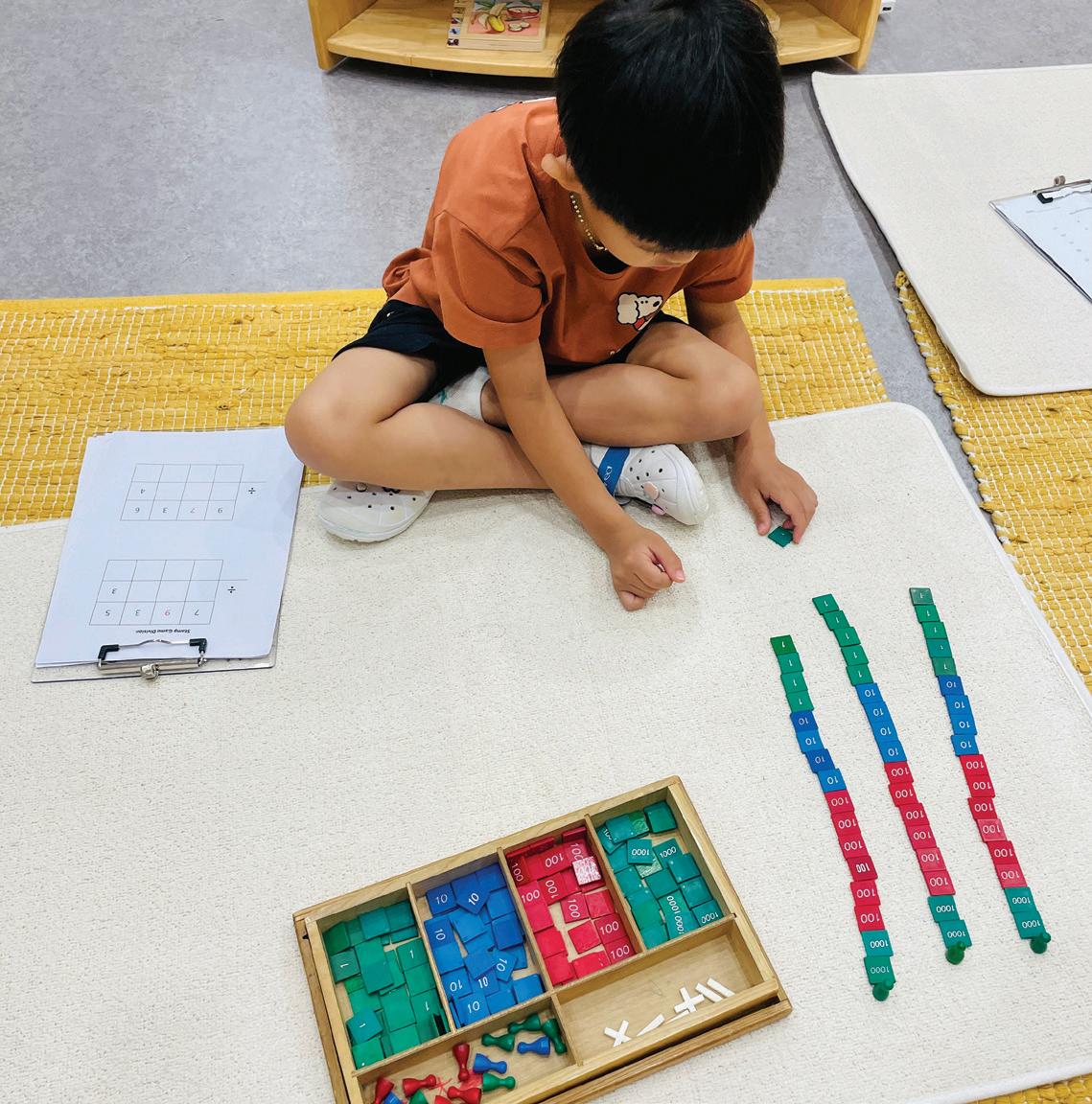
children place the stamps one by one, they can identify the quantities visually, understand the concept, and finally realize how it works. It is wonderful to observe a student who is learning division with the stamp game. In the process of division with two-digit divisors, children take different colors of bracelets or towels to share their roles, and they solve the problem together. This method has the advantage that the process itself can be understood very easily.
As an early childhood educator, these are just some of the many Montessori methods I prefer to use when guiding children from concrete to abstract mathematical thinking.
Kim Yul is originally from Gwangju and has taught in Cincinnati, Ohio, for many years. He is a Montessori elementary school teacher who believes education can change the world.

Through the developmental stages and sensitive periods that vary according to the age of children, their way of thinking develops from concrete to abstract. Along these developmental stages, the Montessori mathematics process has changed in many ways.
Reviewed by Michael Attard
Mary Craig is an historian specializing in the history of central Europe from 1848 to 1933. Mata Hari was born in 1876 and executed in October 1917. The biography reads more like a text book than a novel. This is not a negative criticism but rather reflects the author’s objective approach to the many, often confusing details. The introduction serves as a summary of Mata Hari’s life, including her tragic ending. It would appear that the author presumes that Mata Hari’s notoriety is such that her execution is already known to readers.

As a young girl growing up in the Netherlands, she attended private school, but this ended with her father’s bankruptcy. After her mother’s death, M’greet as she was known, was sent to live with her godfather, who was also her uncle. She was 15 years old. She never did fit in with others. “She was darkhaired and olive-skinned, in distinct contrast to the blonde, pale-skinned idealised notion
of beauty in the Netherlands.” She was also tall at 5 ft. 9 in. (175 cm).
The author cannot offer a firm explanation as to why M’greet was sent to be trained for a job while other young women were being trained for marriage. This is especially confusing in that she was never offered a job at any of the various family businesses. At one point, she was training to be a kindergarten teacher. And as would be the case throughout her life, the combination of circumstances and personal choices would lead to difficult situations. M’greet, then 16, became involved in a sexual relationship with the 51-year-old headmaster. Once the scandal was discovered, she was forcibly removed from the school. “M’greet acted not with contrition but defiance. And it was that which condemned her in everyone’s eyes.”
This early event in M’greet’s life is put into historical context by the author. The female was automatically seen as the guilty party.
And the fact that the woman readily admitted to the enjoyment of sex was conclusive proof that she was depraved. This carried forward, and when the question of whether or not she was a spy was before the all-male military court, her morals and perceived depravity were equated with the character of a traitor.
Her story is interesting from start to finish. She marries a military man, and shortly after the birth of her son in 1897, the young family set sail for the Dutch-controlled East Indies. For M’greet, "colonial life was a mixture of work and boredom.” The marriage was already spiralling downward, with violence an almost daily event. She found a partial escape through dance. The author is intent upon telling M’greet’s story within the context of the time and calls out the illusion of glamor. “The social façade that hid the brutality of empire was necessary to maintain the fiction of bringing civilization to the natives.”
After a return to the Netherlands, there was marriage separation and the earning of a living by “entertaining gentlemen callers in maisons de rendezvous.” In 1903, she moved to Paris. She pursued Oriental dance and “created an illusion that masked her inabilities as a dancer.” In 1905, she is introduced as Mata Hari. It was La Belle Epoque, and Mata Hari was a queen. There were performances in Moscow, Madrid, Monte Carlo, Vienna, and Berlin. And there were just as many lovers. There were ups and downs over the years, but by 1914, she “was starting to enjoy life again.” “This was broken in July when the politics of the Balkans broke into her world and shattered it forever.”
At this point in the book, there is a noticeable change. The confusing details start to come quickly and the author puts forth more questions and speculation than known facts. Again, this is not negative criticism but rather illustrates the complexity of unravelling history. We do know that Mata Hari was approached by German intelligence, that she did not refuse, but rather haggled over how much she would
be paid. And to the author’s mind, Mata Hari, “failed completely to see the danger.”
She began to travel all over Europe, which was not easy to do in time of war. She persisted in her attempt to get travel papers to an area of France that was a military district, supposedly to recharge her health in the natural mineral waters. Why not go to another health spa? She later claimed that it was at this time that French officials broached the subject of her working for France. This was later denied by those officials. By now, she had raised the suspicions of the British, and they had her under surveillance. Mata Hari continued to live as lavishly and flamboyantly as she always had. For the French, this was another indication that she was a spy. Her lifestyle did not project support for the French war effort. And all along she had her lovers, almost all military men.
The movement of events can become tedious for the reader. There are a lot of names to remember. Eventually, Mata Hari is arrested by the French. The author again reminds us of the male-dominated worldview. The investigating magistrate believed that she was guilty from the start. “Innocent women don’t get arrested.”
She was in prison for eight months. Admitting that she had been recruited by the Germans was not helpful, and then there were revealing telegrams. However, there was never evidence of what exactly she is supposed to have revealed to the Germans. The trial took two days, one for the prosecution’s case and the second day for the defense. Cross-examination was not allowed, and the threshold of proof was low. She was found guilty and sentenced to be shot.
Michael Attard is a Canadian who has lived in Gwangju since 2004. Though officially retired, he still teaches a few private English classes. He enjoys reading all kinds of books and writes for fun. When the weather is nice, you may find him on a hiking trail.
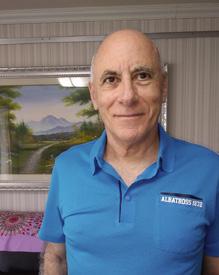
Is there any secret to happiness? Or is it something unidentifiable? Or can it be explained by the relative theory of Einstein?
Like, when we are beside a person we love, we can’t feel the time passing, but then we can’t survive the boring lecture of our least favorite teacher.
Maybe or maybe not. Maybe it’s just me, you, or us, and our perception towards our needs and achievements.
Children can be happy with just a small toy or a candy we bought for them. Why can’t we, the adults, also be? Do we ever think about this?
Yes, I can hear the answer. We aren’t children anymore. We have lots of issues to take care of. But the reality is every adult, at least once in a lifetime, has thought of becoming a child again if they could have the chance.
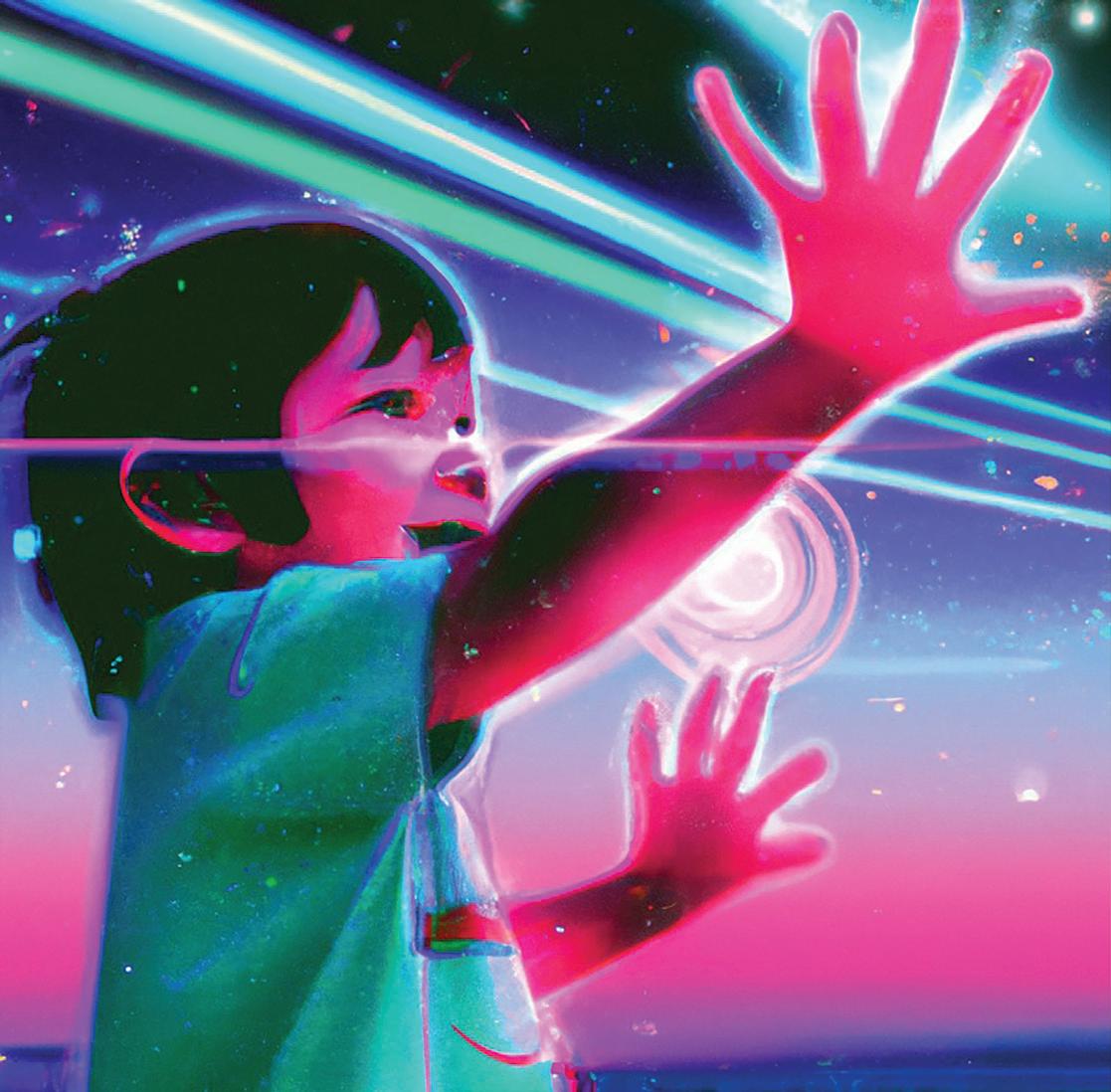
It’s not like we want to become small again; it’s the feelings we want to feel again. We want that absolute happiness a child has.
That brings us to the question, why are children so happy?
Isn’t it obvious that children are happy because their hearts are the purest, without the burden of what others think? They can be happy with only the tiniest thing they own or get. Their thoughts are the simplest. They don’t mind what other people are thinking of them.
Maybe these ideas could be the secret to happiness, appreciating everything we have, even the tiniest ones. The answer to a difficult question is not always a complex one. It could be so simple that we have just ignored it.
Also, we’re more focused on heightening our achievements and forget to appreciate the ones we have. We’re more focused on reaching our goals as if we were in a 100-meter sprint. We’re
just running, forgetting everything around us. Will it matter when we’ve reached the heights, taken the time to look around us, and found none to share the joy with? We leave everything and everyone behind us, thinking these would only slow us down.
Will it matter when we’ve reached the heights, taken the time to look around us, and found none to share the joy with? We leave everything and everyone behind us, thinking these would only slow us down.
We see life as a competition. If we want to go further, we must be better than others. We think, “Why would we give a hand to the people who fall behind and help them rise so that they can compete with us? No, we can’t do that. Life is a battlefield. Survival of the fittest.”
Is it, really?
Or is it just our selfish thoughts? A question can arise here: Is competition bad?
It’s necessary to force ourselves forward to advance our civilization. There are billions of people, so we must be competitive to make our presence be felt.
If we take the above statement into account, wouldn’t it be better to compete with oneself?
What was I yesterday, and what am I today? Is there any positive change I made to myself? Am I better than yesterday? Isn’t it a simple answer?
Comparing our successes to others’ achievements and thinking about societies’ perceptions of us
only sickens us to the point where we fall into a pit of depression.
In this competitive life, we hurt each other; we hate each other.
Hate isn’t the answer: It’s simply the villain of our happiness. It consumes our thoughts and time and spreads negativity like we’ve been bitten by a venomous snake. Only we’ll feel the pain.
Forgiveness is the antivenom here. We should forgive others for us to be healthy – not for them. Forgiveness brings the love we need.
This statement brings us back to the child happiness theory. Keep the heart positive, appreciate what we have, and cherish the people around us.
Happiness isn’t that difficult. As we want people to be selfless towards us, so should we be to them. It’s the simple secret to happiness, isn’t it?
Nahida Islam is a PhD student at Chonnam National University in Gwangju. She is an introvert who always dreams of a world full of love and care. She does not think about achievement but cherishes the way to any destination. A country girl from Bangladesh, she should not be here, but she is.

It’s simply the villain of our happiness. It consumes our thoughts and time and spreads negativity like we’ve been bitten by a venomous snake. Only we’ll feel the pain.The Author
Kim Hae-sung was born and raised in Gwangju and is known as a watercolor artist. Whenever I go to see his art exhibitions, I cannot help loving his fantastic paintings. For this month’s column, I interviewed Artist Kim at his studio in downtown Gwangju.
Jennis: Thank you for this interview for People in the Arts for the Gwangju News. Coming up the stairs to your studio was like entering an unknown jungle. The works depicting happy-faced animals such as water buffalo, mules, and birds in the green of nature are marvelous. I wonder if you have liked painting since your childhood.

Kim Hae-sung: This studio is where I used to run around when I was a kid. I grew up in this downtown area, where my parents operated stores, and I went to Jungang Elementary School on Art Street. I have liked drawing since I was young. I drew pictures on my friends’ arms with a felt pen, and I received marbles or picture card stickers for my drawings. They even waited in line to get my drawings during school recesses. I did not study painting until I went to high school, but I have always been drawing and painting.
Jennis: I heard that you graduated from the College of Fine Arts at Chosun University. What were your early works like? I wonder what kind of changes your works have gone through.
Kim Hae-sung: Since I went through Gwangju’s May 18 Uprising when I was a sophomore in college, I think it was a natural process to try to express the issues I experienced as a young painter. But painting that deals with heavy topics did not seem to be a good fit for me. So, I started to paint stories about the environment that make us beings.
Jennis: You have been to Beijing as part of the 1st Residency Team of the Gwangju Museum of Art. How was your work there?
Kim Hae-sung: China has a lot of peoples living together. There are more than 50 officially recognized ethnic minorities. I painted the traditional costumes that the different ethnic groups wear on their own festival days in 120 works. I put the 120 small paintings together to create one large artwork. Its message was “When Small Diversities Meet, One Big Beauty Is Created.”
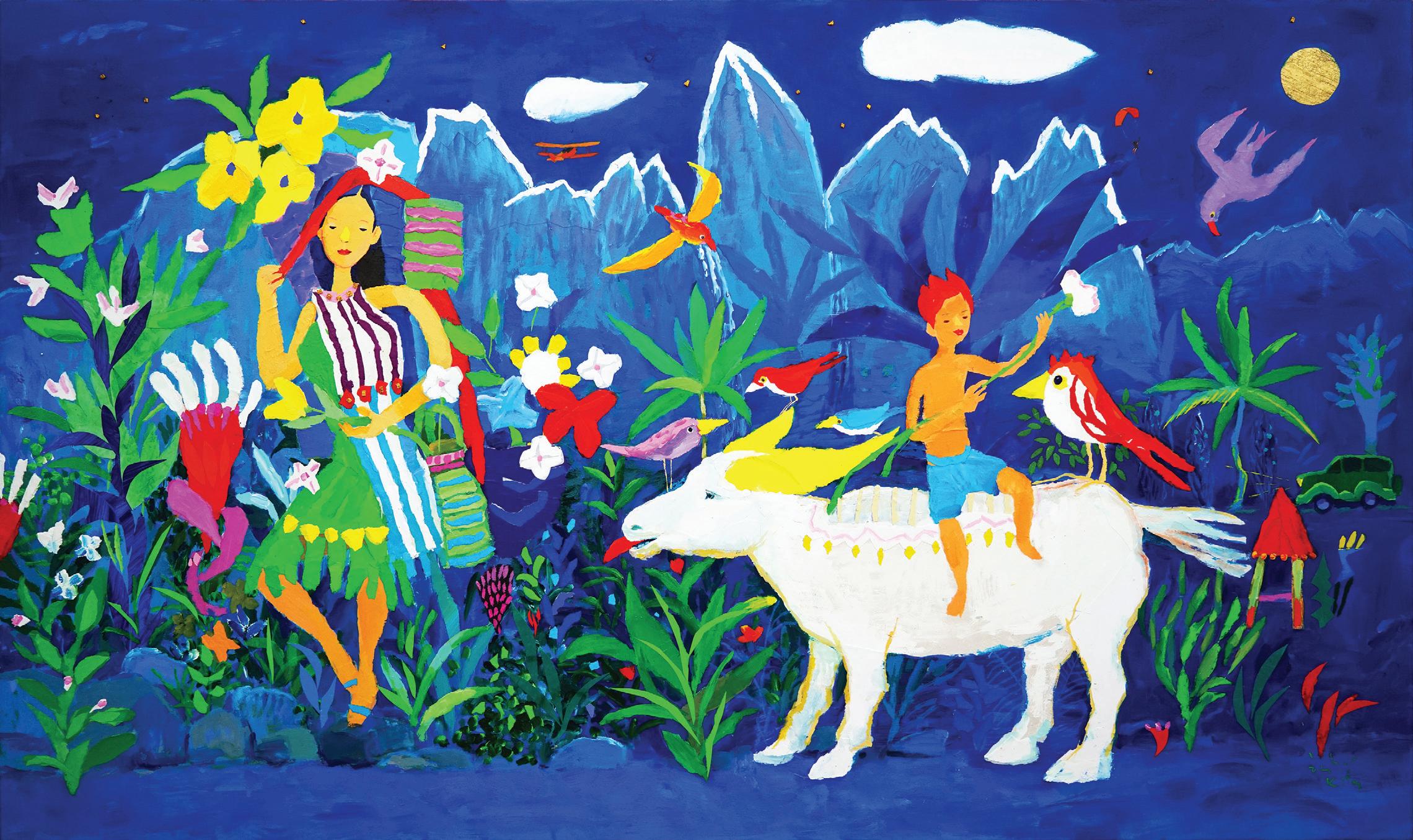
Jennis: You have made a lot of travel sketches –what kind of opportunity did you have?
Kim Hae-sung: My first sketching trip started in 1994. I was a member of the serialization project team for the Mudeung Ilbo newspaper in Gwangju. We took a train from Khabarovsk, Russia, to report on what we saw on our way across Russia to Europe for the newspaper.
Jennis: I wonder what the cross-continent Russian train trip was like 30 years ago, back in 1994.
Kim Hae-sung: I started my journey across
Siberia, imagining the vastness of nature in Russia through the works of great Russian artists like Tolstoy and Tchaikovsky. But it is not easy to stay in a narrow space for many days. The trees outside the train window seemed endless. After passing a hazy horizon, the swamps, and misty rivers, the trees sparkled under the blue sky. I was inspired by the scenes passing by outside the window. There were hard and painful moments on the journey, too. But I think that how one copes with them is up to each person.
Jennis: Have you been doing travel sketches consistently since then? Which countries have you traveled to?
Kim Hae-sung: I usually travel to remote areas in Central Asia, South Asia, and Southeast Asia, such as Mongolia, Nepal, the Himalayas, and India. I once went to Yunnan in China to find Shangri-La. And in the Mongolian desert, I slept in a sleeping bag on the sand. I was surprised when I opened the zipper of my sleeping bag in the middle of the night and opened my eyes. The sky was right in front of me, and I felt like the stars were pouring into my face, causing me to quickly jerk my head to the side.
Jennis: You have been to many countries – where and what was the most impressive moment?
Kim Hae-sung: The most memorable place is Ladakh in northernmost India – an area that has hosted a self-sufficient community with minimal support in a barren environment with a winter that lasted for more than eight months. Living in a rich, modern city, I feel the high-rises making longer and darker shadows behind them. And I think the gap between the rich and the poor is getting wider in this modern society. But the people of Ladakh, who we think of as not living well, were really living quite humanly. It was a place of helping each other, and I felt like I was seeing our old days. As in the book Ancient Futures, for those of us these days who think that only owning a lot is happiness, Ladakh was a place that made us think about what true happiness is.
Jennis: Do you go on these journeys alone?
Kim Hae-sung: There is an organization called the Organization for Gwangju International Cooperation (광주국제협력단, OGIC) in Gwangju. It is an organization that has built a Gwangju Clinic in Nepal and provides medical services. We have been traveling together once a year. The trips paused during the Covid-19 pandemic, but we plan to travel again next summer. Art lovers and artists travel together. If the art lovers support the travel expenses of the artists, the artists return the gesture with sketches from their trips. It is a win-win arrangement.
Jennis: When you go on a sketching trip, do you draw on the spot or after traveling?
Kim Hae-sung: Most of what I do is draw sketches on the spot. But in the field, I draw with

light and simple tools, so sometimes when I want to express a concept with various materials, I come back and work in the studio. I sometimes use indigenous handmade cloth that I bring back from the area I visited for my paintings.
Jennis: Your work features flowers, trees, and animals. You especially draw a lot of birds in your paintings. What has led you in this direction?
Kim Hae-sung: Birds fly freely in the sky. They have to have a light body for this freedom that transcends the earth. If they are greedy and get bigger, they will not be able to fly freely. I learn from the birds. From long ago, humans have worshiped birds, and so do I.
Jennis: As an artist, what do you think you gain most from your sketching trips?
Kim Hae-sung: There are moments when I realize the reason for my traveling through the process. Not all things in this world go as expected. I am just going to do my best at every moment and, if possible, think happy thoughts and live happily.
Jennis: What are your future painting plans?
Kim Hae-sung: My “Ink Flower” Exhibition is at the ACC Design Hotel Gallery on Geumnam-ro and runs through October 21. In it, I express my favorite theme, flowers, using only the most basic materials for painting.
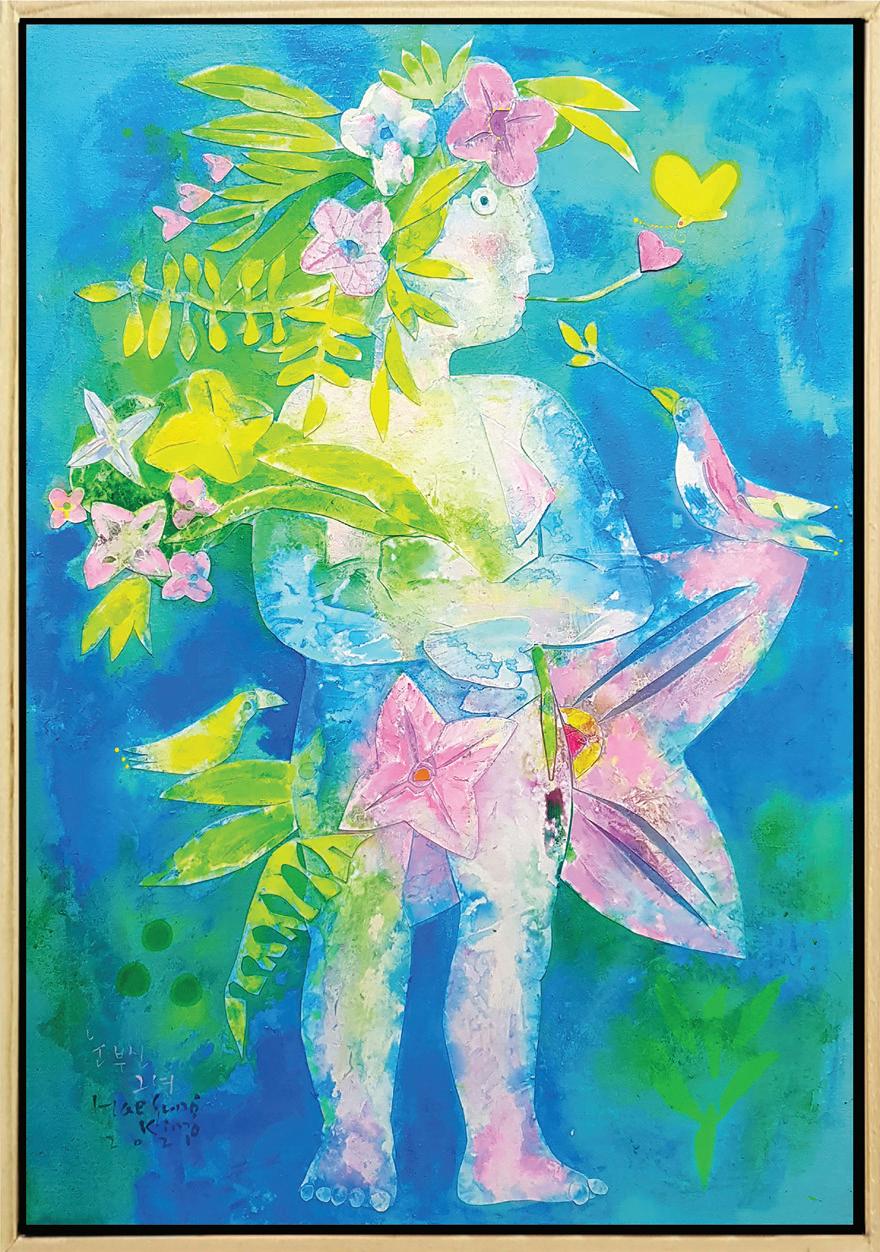
Jennis: Congratulations on your exhibition and thank you for this delightful and detailed interview.
Kim Hae-Sung’s
• College of Fine Arts, Chosun University: BA, MFA
• Individual Exhibitions: 29; Group Exhibitions: 650
• Art Studio: White Space, 23-3 Hwanggeumdong, Dong-gu, Gwangju
• Email: star9993@naver.com
Select Exhibitions
• Koln Art Fair (Cologne, Germany)
• Art Beijing (Beijing, China)
• All About Korea (White Box, Munich, Germany)
• Korean Contemporary (Schultz Contemporary, Berlin, Germany)
• Something Different – 春 Spring (Red Art Gallery, Beijing)
• Korea-China Art Exchange Exhibition (Dashanzi798, Beijing)
• The Winners of the Joong-Ang Arts Contest (Hoam Art Museum)
• The Second Gwangju Biennale Special Exhibition
• Today’s Artists (Kumho Art Museum)
Jennis Kang is a lifelong resident of Gwangju. She has been doing oil painting for almost a decade, and she has learned that there are a lot of fabulous artists in this City of Art. As a freelance interpreter and translator, her desire is to introduce these wonderful artists to the world. Instagram: @jenniskang

네하: 언니, 그거 알아요? 어제 소장님께서 혼자서
사무실 청소하는 것 봤는데 깜짝 놀랐어요.
Neha: Eonni, you know what! I was very surprised when I saw our director cleaning the office all by himself yesterday.
정민: 우리 소장님이 깨끗한 환경을 좋아하셔.
Jeongmin: Our director loves a clean environment.
네하: 네. 그래도 소장님이신데 아침 일찍
나오셔서 청소하시는 게 너무 인상적이에요.
Neha: Yeah. Still, he is the director, so it is really impressive for me to see him come early in the morning and clean up the place.
정민: 벼는 익을수록 고개를 숙인다고 하잖아.
소장님도 그런 분이셔.
Jeongmin: As they say, the bough that bears the most hangs lowest. Our director is such a person.
네하: 맞아요. 우리나라에서는 이런 모습을 보기
너무 어려워요.
Neha: True. It is very difficult to find something like this in my country.
정민: 우리나라도 모든 어른들이 소장님처럼
겸손하시지는 않아.
Jeongmin: In Korea, too, not everyone is humble like our director.
네하: 모든 사람이 소장님처럼 행동한다면 더
나은 세상이 될 거예요.
Neha: If everyone acted like our director, the world would be a better place.

~을수록: This grammar point is attached to the verb or adjective stem of a first clause and expresses that as the changes happen in the first clause, they also affect the second clause, causing a subsequent change there as well. It is used frequently in sentences like “The more you do something, the better you become at it.” When the verb/adjective stem ends in a batchim (받침, final consonant), use ~을수록, and when it ends in a vowel, use ~ㄹ수록.
Ex: 시간이 지날수록 외국 생활에 익숙해진다.
As the time passes, you get used to living abroad.
벼는 익을수록 고개를 숙인다: This proverb, which literally means “The riper the rice, the lower it bows its head,” is used to express the humility and modesty of a high achiever. It teaches that the more one achieves, the more they should become humble and kind to others.
Ex: 전국 대회에서 일등을 하셨어도 아직 배울 게 많다고 하시네요.
벼는 익을수록 고개를 숙인다는 말이 딱 맞네요.
Even though you have gotten the first prize in the national competition, you say that you have much to learn! They are not wrong when they say “The boughs that bear most hang lowest!”
어제: yesterday, 소장: director, 사무실: office, 청소하다: to clean, 깜짝 놀라다: be very surprised, 깨끗하다: to be clean, 환경: environment, 일찍 나오다: to come early, 인상적이다: to be impressive, 벼: rice plant, 익다: to ripen, 고개를 숙이다: to bow one's head, 겸손하다: to be modest, 행동하다: to act; to behave, 세상: the world, 나은 곳: a better place
The Author
Harsh Kumar Mishra is a linguist and Korean language educator. He volunteers with TOPIKGUIDE.com and Learnkorean.in. He has also co-authored the book Korean Language for Indian Learners.
This is our latest monthly installment by Daniel Springer of the Gwangju Foreign Language Network (GFN), where “Danno” picks his favorite newly released tunes that you may have missed, along with some upcoming albums and EPs that you might want to keep on your radar. — Ed.

For those wondering when we were going to get the follow-up to Adrian Quesada and Eric Burton’s smashing Grammy-nominated 2019 self-titled debut, we finally have the answer. The Austinbased duo released the bright and infectious “More Than a Love Song” on August 22, and the reaction has been electric, with the undeniable quality of Adrian Quesada’s production and the infectious fun they obviously have together making music. The band’s sophomore album Chronicles of a Diamond drops everywhere on October 27, a proper close to a manic couple of months in music here in September and October.
GHOST TRAIN ORCHESTRA & KRONOS QUARTET FEAT. JOAN AS POLICE WOMAN – “WHY SPEND A DARK NIGHT WITH YOU?”
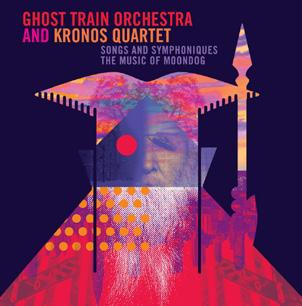
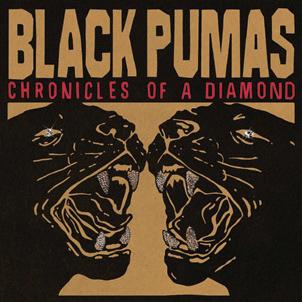
In what is probably our most interesting and inventive tune for this past month, we have Joan as Police Woman returning to add the vocals on this intricately assembled and oddly timed tribute to a New York legend by some dedicated veterans
of the audio game. This is the second teaser single to an album Ghost Train Orchestra and Kronos Quartet decided to put together to pay loving homage to Moondog, aka Louis Hardin, the blind composer who lived on the streets of Manhattan and became known in the 1960s as “the Viking of Sixth Avenue” for his striking appearance. His beautiful and haunting music was an inspiration to Philip Glass and Steve Reich, who referred to him as “the godfather of minimalism.” The record is titled Songs and Symphoniques: The Music of Moondog, and dropped in full on September 29.
For years, astronomers have been theorizing about dark matter in the cosmos, and even whole stars made of the indetectable, still theoretical material. With the release of The Land Is Inhospitable and So Are We, Mitski Miyawaki has an album that is indisputable quality top to bottom, front to back, and any other way you look at it. A glimmering, glorious, and glowering diamond of exquisite Americana, the album sees the veteran artist’s indelible voice fitting every detailed arrangement like a glove. Maybe out in the universe, there are in fact dark stars, and maybe somewhere out there one was created with the sheer psychological effort, universal
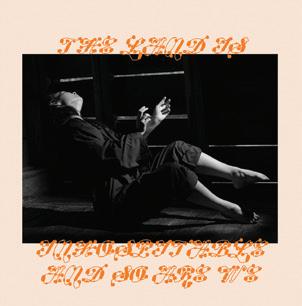
empathy, and raw delicacy to be found on this album. Stars in the cosmos take a long time to form, and in a way, Mitski’s has taken a good amount to fully shine as well. But let there be no doubt, this is Mitski’s moment to shine bright and manifest undeniable gravity.
This is the title track to a very solid debut album from Jalen Ngonda, who’s a native of Washington D.C. but now resides in the UK. While the record is on the main vintage R&B, Ngonda states that his music tries to add a touch of The Beach Boys and The Beatles “somewhere in between.” The main feature here though is Ngonda’s absolutely thrilling vocal abilities, which at times can give palpable chills. Very worthy of a front-to-back spin, especially for the soulsonic lovers out there, available via the legendary Daptone Records.


In what might be our tune of the month, the falsetto frontman on the drums for Durand Jones and The Indications is back with this absolutely beautiful piece of Latin low rider-inspired soul that most likely far outshines any diamond you personally have seen in real life. This is the near side of a new 7” single releasing physically in December via The Indications’ old label before joining major imprint Dead Oceans, proving once again the lasting power of connection between the band and the label that discovered them, Colemine Records. Additionally, the physical LP is incredible, being cut on heartshaped vinyl.

For years, the frontman of Miike Snow has
been a songwriting legend, penning iconic lyrics for some of the biggest names in the business. However, this year has been a notable success, even for Wyatt, with four songs credited on the recent Barbie film’s soundtrack, which was the smash hit of the summer both on screen and stream. Now, we have Wyatt coming out with a new solo album later this year titled Someday It Won’t Feel Like Dying, which is the artist’s first solo LP in a decade’s time.

Almost invariably, one rolls the eyes at octogenarian bands who’ve been around for eons announcing new music even before listening (although we’re still shrugging after listening, Roger Waters). This latest tune from The Stones blows any of that churlish reticence right out of the water, with the band putting out possibly their best new music in 40 years’ time. The video is also a sight to behold, with a woman basically giving a cherry red Benz what can only be described as a lap dance while it drives down Sunset in LA past animated billboards of The Stones at various stages in their storied career. Look out for the band’s new album Hackney Diamonds, due out October 20.
Sometimes albums have a bit of a slow time reaching listeners and critics, if they ever even do, and this would be true for this New Yorkbased quintet that just put out the second part of their fifth studio album Younger Than I Was Before. The irreverence of this band and their sense of humor is to be found throughout, with skits peppering the 26-song tracklist that clocks in at just over an hour. The band might joke around

and have a laugh, but they are serious musicians as well, and this album is a worthy listen.
This highly anticipated album just dropped on September 29 and is titled Yard, which is the sophomore LP from this on-the-rise band out of Madison, WI, who are now based in Chicago. This song is the fourth teaser single from the album to drop in the lead-up to full release, a twangy bit of acoustic melancholy that bodes well for the full release.

This is Charlotte Day Wilson’s first release since 2021’s highly acclaimed ALPHA LP dropped, and in the meantime, the artist has signed with a new label, XL Recordings. To mark the occasion, Wilson enlisted the help of the seemingly ubiquitous and ever-tasteful Snoh Aalegra, who’s a name to know out of Sweden and about to blow up. The result is two elegant up-and-coming vocalists rocking a silky R&B bump duet in an interesting moment to savor between two artists on the verge.
Field Medic – Light Is Gone 2 (September 1)
Slowdive – Everything Is Alive (September 1)
Allison Russell – The Returner (September 8)
Deeper – Careful! (September 8)
Courtney Barnett – End of the Day (September 8)
Yussef Dayes – Black Classical Music (September 8)
James Blake – Playing Robots into Heaven (September 8)
Olivia Rodrigo – Guts (September 8)
Mitski – The Land Is Inhospitable and So Are We (September 15)
Haley Blais – Wisecrack (September 15)
Vagabon – Sorry I Haven’t Called (September 15)
Nation of Language – Strange Disciple (September 15)
Pale Blue Eyes – This House (September 15)
Devendra Banhart – Flying Wig (September 22)
Chai – Chai (September 22)
Yeule – Softscars (September 22)
Slaughter Beach, Dog – Crying, Waving, Laughing, Smiling (September 22)
Say She She – Silver (September 29) 2xLP
Jorja Smith – Falling or Flying (September 29)
Blonde Redhead – Sit Down for Dinner (September 29)
Cherry Glazerr – I Don’t Want You Anymore (September 29)
Slow Pulp – Yard (September 29)
Sufjan Stevens – Javelin (October 6)
L’Rain – I Killed Your Dog (October 13)
+++ (Crosses) – Goodnight, God Bless, I Love U, Delete. (October 13)
The Menzingers – Some of It Was True (October 13)
The Drums – Jonny (October 13)
The Author Daniel J. Springer (aka “Danno”) is the creator, host, writer, editor, producer, troublemaker, and Mr. Fix It of “The Drop with Danno,” broadcasting weeknights on GFN 98.7 FM in Gwangju and 93.7 FM in Yeosu from 8–10 p.m. Prior to this, he was a contributor to several shows on TBS eFM in Seoul, along with being the creator and co-host of “Spacious” and “White Label Radio” on WNUR in Chicago.

Instagram, Twitter, Facebook: @gfnthedrop
Show RSS Feed: https://feeds.transistor.fm/the-dropwith-danno
Jamila Woods – Water Made Us (October 13)
Allah-Las – Zuma 85 (October 13)
Metric – Formentera II (October 13)
Bombay Bicycle Club – My Big Day (October 20)
The Rolling Stones – Hackney Diamonds (October 20)
Sampha – Lahai (October 20)
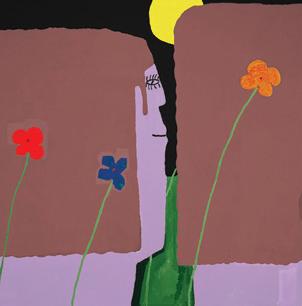
Black Pumas – Chronicles of a Diamond (October 27)
Shabazz Palaces – Robed in Rareness (October 27)
The Gaslight Anthem – History Books (October 27)
Crime in Stereo – House & Trance (October 27)
DJ Shadow – Action Adventure (October 27)
GWANGJU FRINGE FESTIVAL 2023
2023 광주프린지페스티벌
Dates: October 20–22, 2023

Location: May 18 Democracy Square and the Asia Culture Complex
5.18민주광장 및 아시아문화전당
Admission: Free
Telephone: 062-670-7983
Website: fringefestival.kr (KOR)
CHUNGJANG WORLD FESTIVAL OF RECOLLECTION
광주 추억의 충장축제
Dates: October 5–9, 2023
Location: Around Dong-gu, Gwangju (Chungjangro, Geumnam-ro, May 18 Democratic Plaza, etc.)
충장로, 금남로, 5·18 민주광장 및 광주 동구 일원
Telephone: 062-233-1007
Admission: Free
Website: www.donggu.kr (KOR)
THE SECOND BUSKING WORLD CUP IN GWANGJU SEMI-FINAL AND FINAL ROUNDS
제 2회 버스커즈 월드컵 IN 광주 본선 , 결승
Dates: October 3–9, 2023
Location: May 18 Democratic Plaza and the Asia Culture Complex’s Haneul Madang
5.18 민주광장 및 아시아문화전당 하늘마당
Telephone: 0062-232-1008
Admission: Free
Website: www.buskingworldcup.com/eng (KOR/ENG)
THE 13TH WORLD HUMAN RIGHTS CITIES FORUM
세계인권도시포럼
Dates: October 4 – 7, 2023
Location: Kim Dae Jung Convention Center
김대중컨벤션센터
Telephone: 062-226-2734
Website: www.whrcf.org/ (KOR/ENG)
Dates: Every day in October 2023
Location: Around Gwangju
Admission: 4,900 won
Website: www.gwangjuct.com/ (KOR/ENG)
ART PICNIC
아트 피크닉
Admission: Free
Telephone: 062-613-3430
Dates: October 7–8, 2023
Time: 3–5 p.m.
Location: : Geukrak Park (Seo-gu)
Dates: October 14, 2023
Time: 3–5 p.m.
Location: : Yangsan Lake Park (Buk-gu)
Dates: October 21–22, 2023
Time: 3–5 p.m.
Location: : Around Sandong-gyo Bridge (Gwangsan-gu)
THE INTERNATIONAL FRIENDSHIP DESIGN EXHIBITION
센다이 국제교류디자인아트전
Dates: October 7 – October 14, 2023
Location: Global Lounge at the Gwangju International Center
광주국제교류센터 글로벌라운지
Admission: Free
Telephone: 062-226-2733
Website: art-goodwillexhibition.com/ (JPN)
THE 2023 GWANGJU LIQUOR TOURISM FESTA
2023 광주주류관광페스타
Dates: October 7–10, 2023
Location: KDJ Convention Center, Halls A & B
김대중컨벤션센터 A/B홀
Telephone: 062-611-2169
Admission: 15,000 won
Website: www.liquorfesta.com (KOR/ENG)
2023 GWANGJU INTERNATIONAL COMMUNITY WEEK
2023 광주국제교류주간
Dates: October 6–8, 2023
Location: Art Street
Telephone: 062-226-2732
Admission: Free
Website: gic.or.kr (KOR/ENG)
Dates: September 7 – November 11, 2023
Location: Biennale Halls, Gwangju City Museum of Art, Gwangju Institute of Design Promotion, Yangnim History & Culture Village
비엔날레전시관, 광주시립미술관, 광주디자인진흥원,
Admission: 16,000 won
Website: www.gdb.or.kr/ (KOR/ENG)
Dates: September 1 – October 31, 2023
Location: Mokpo City, Jindo County, and other parts of Jeollanam-do
Telephone: 061-280-5866
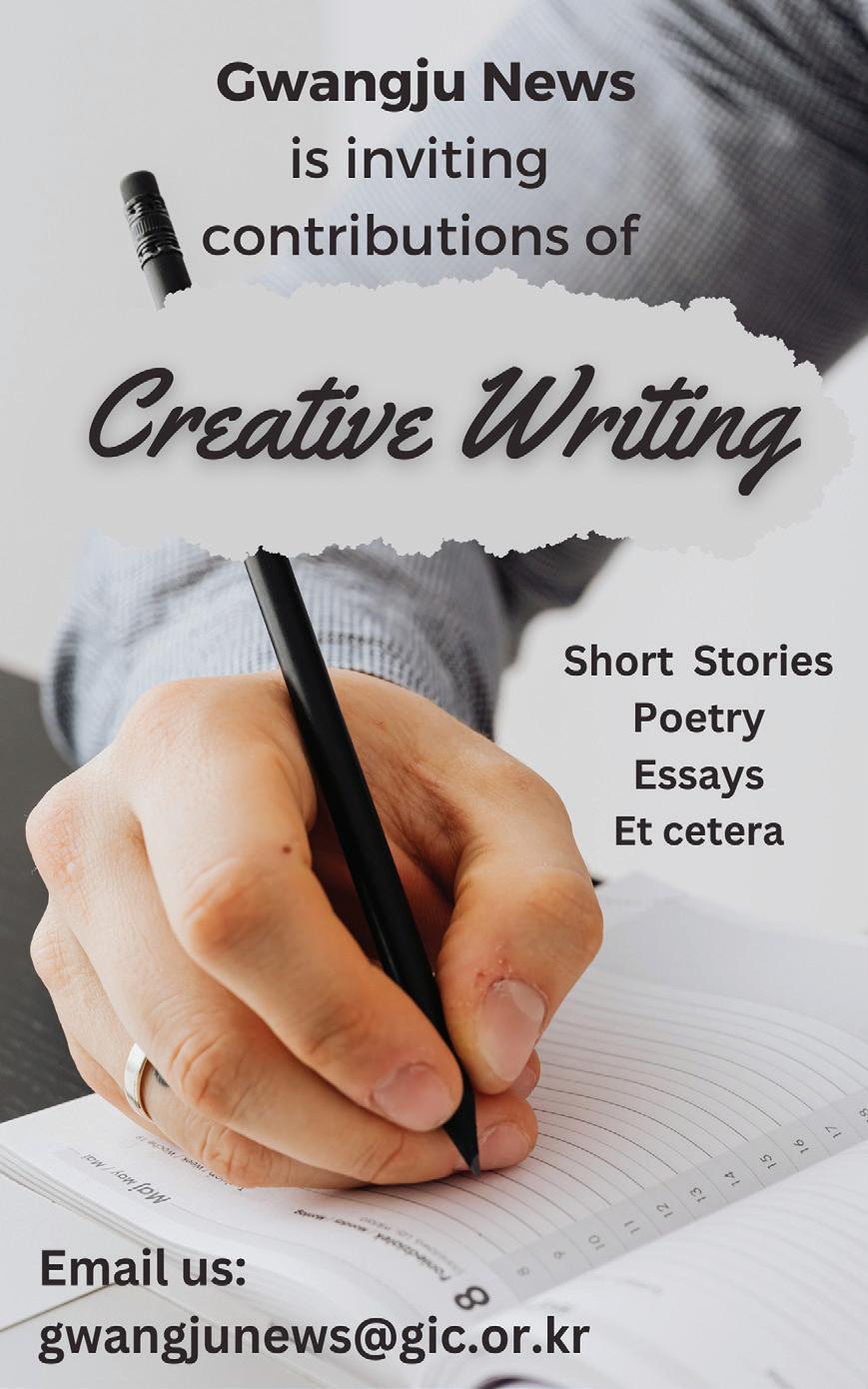
Admission: 10,000 won
Website: http://www.sumukbiennale.kr/sumuk (KOR/ENG)
THE 29TH NAMDO FOOD FESTIVAL
Dates: October 6–8, 2023
Location: 1 Bangnamhoe-gil, Yeosu-si, Jeollanam-do
Admission: Free
Telephone: 061-286-5771
Website: www.namdofood.or.kr/ (KOR)
전라남도 여수시 박람회길 1(덕춘동)

